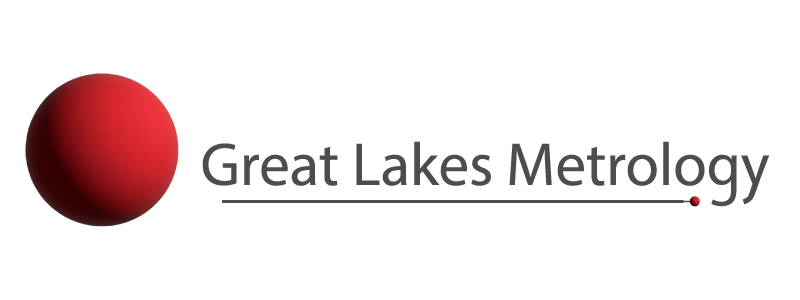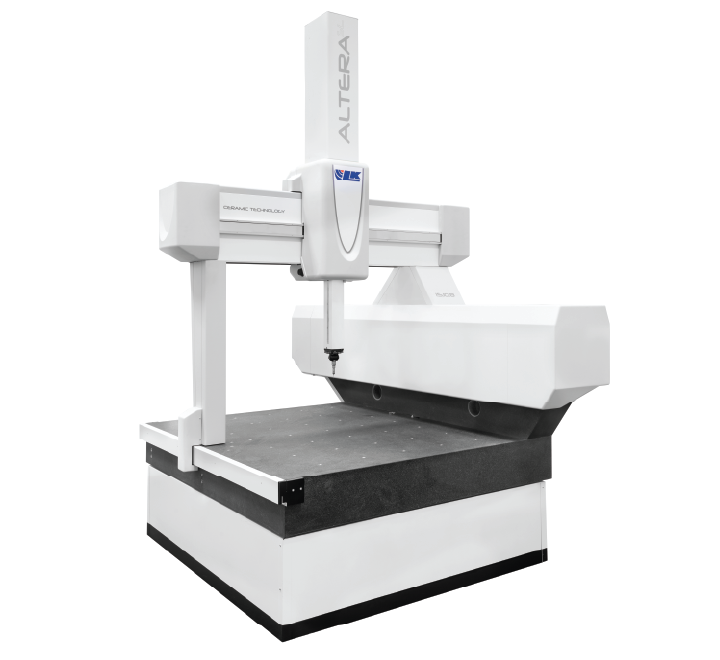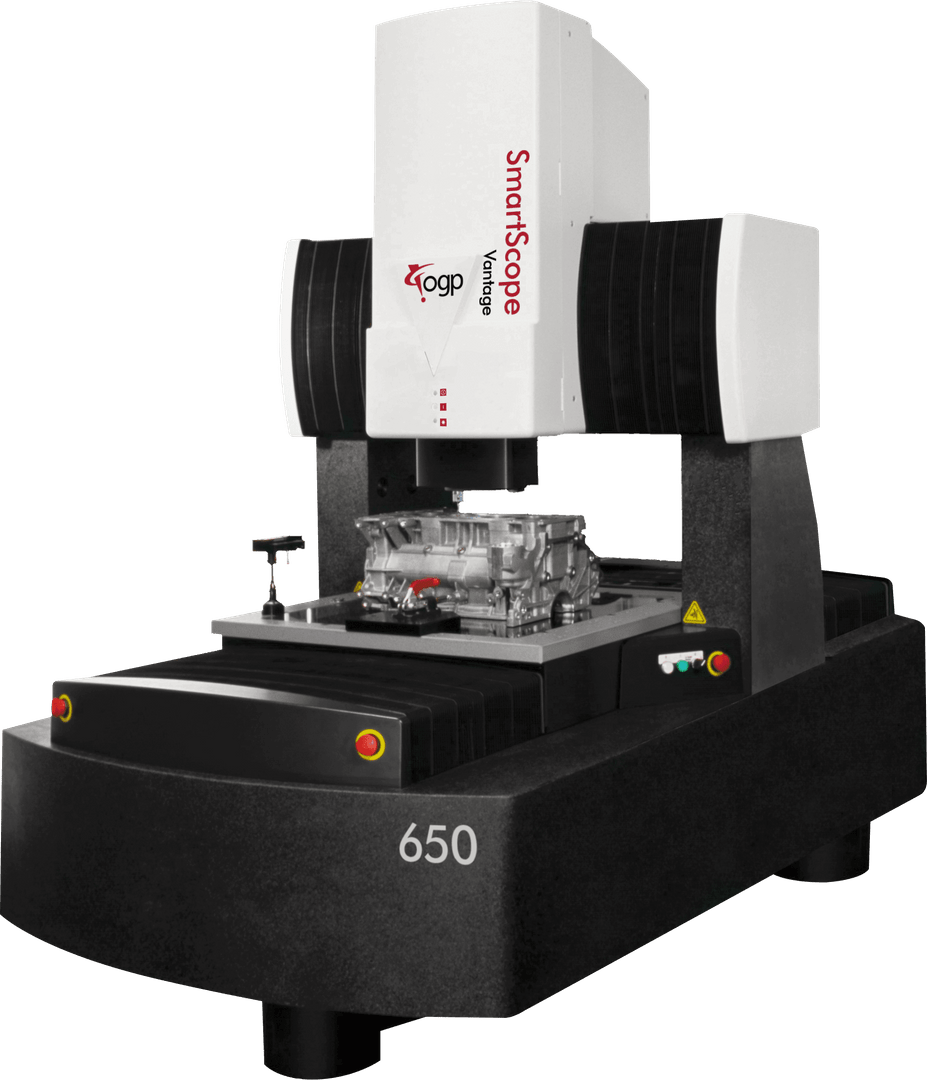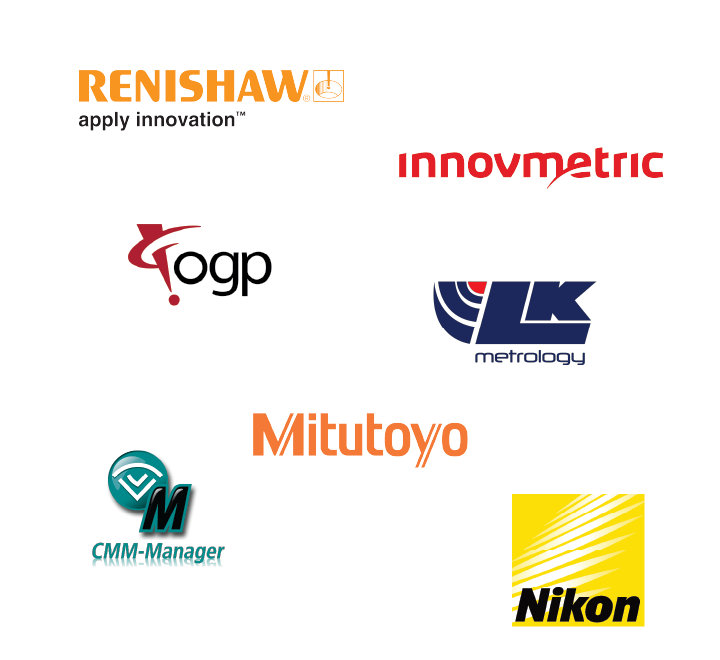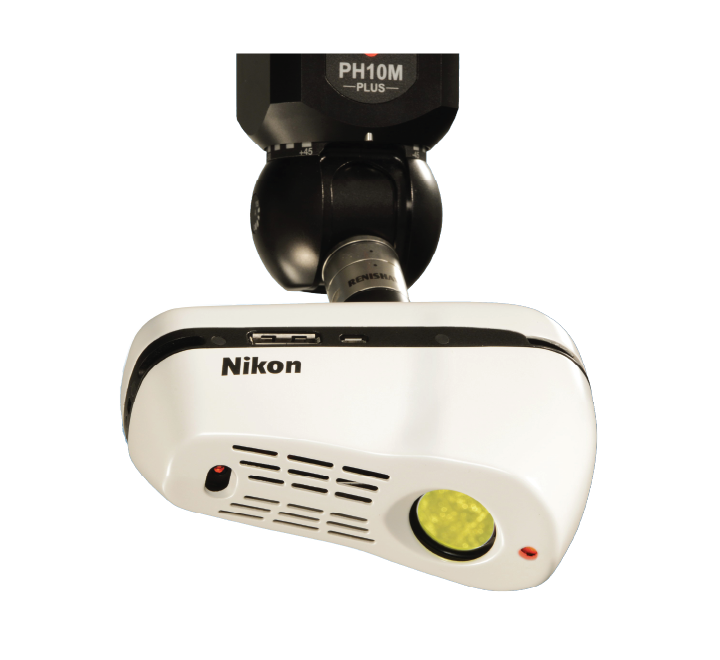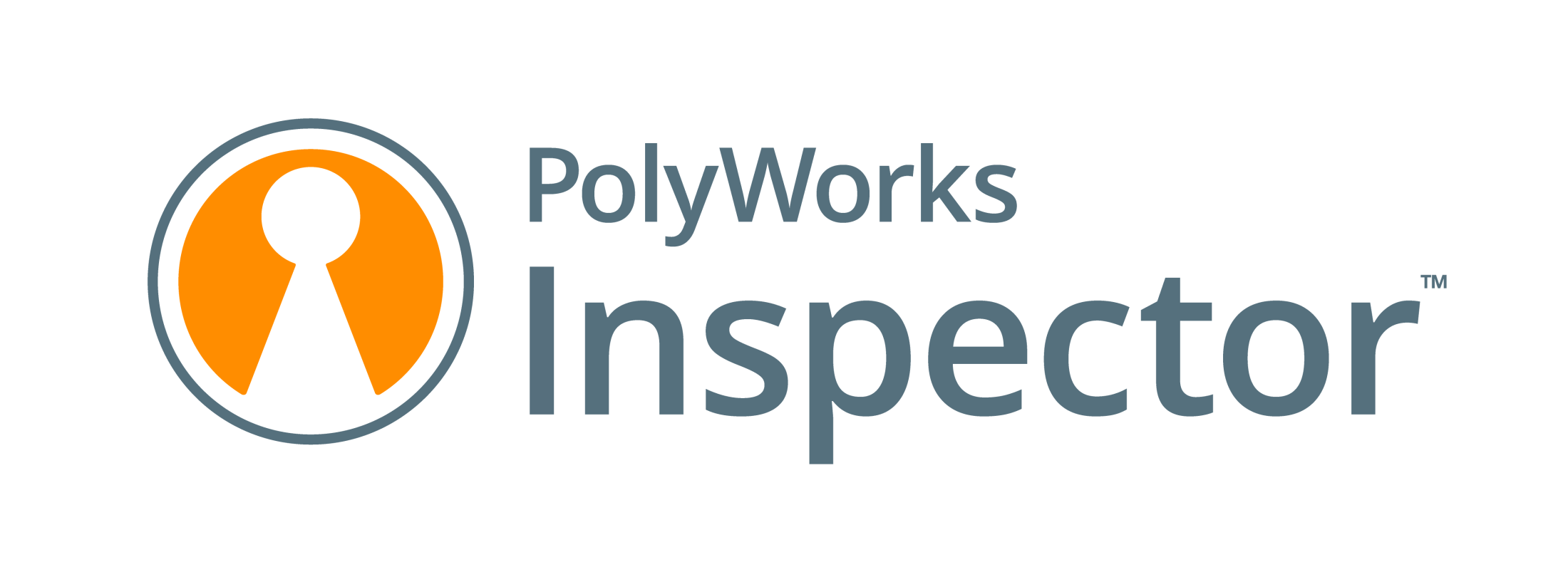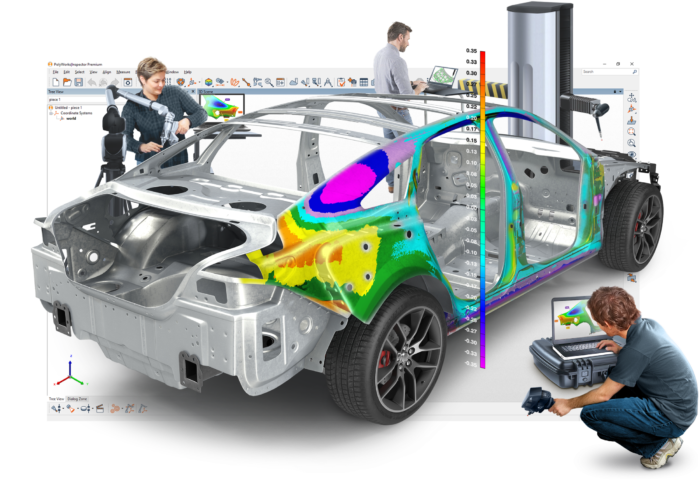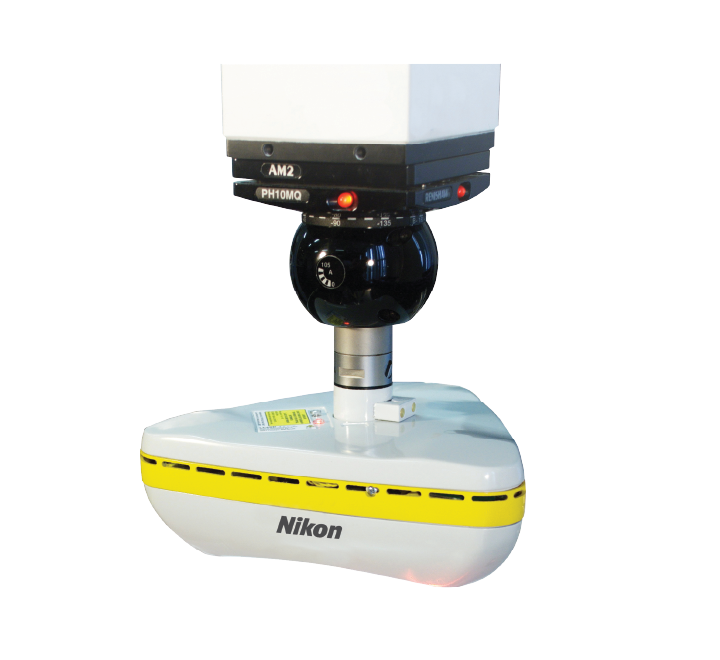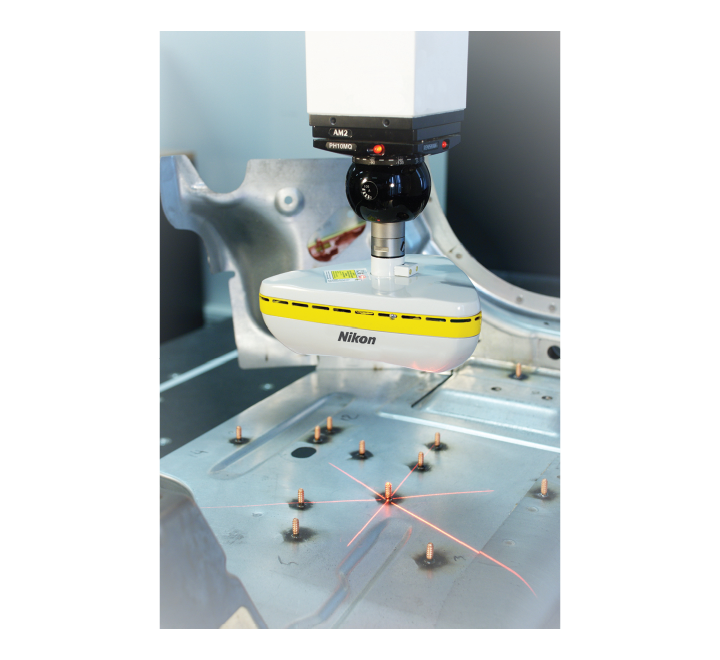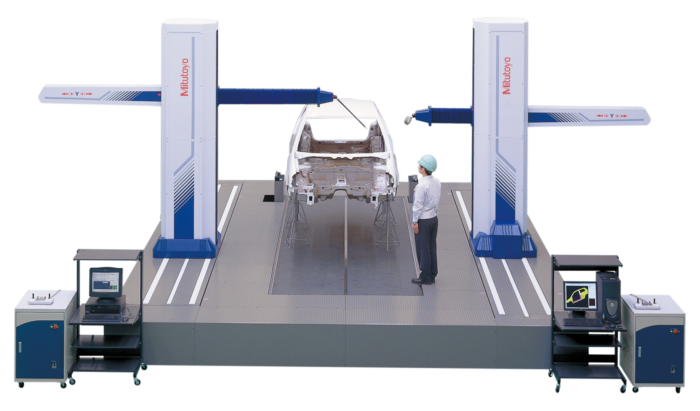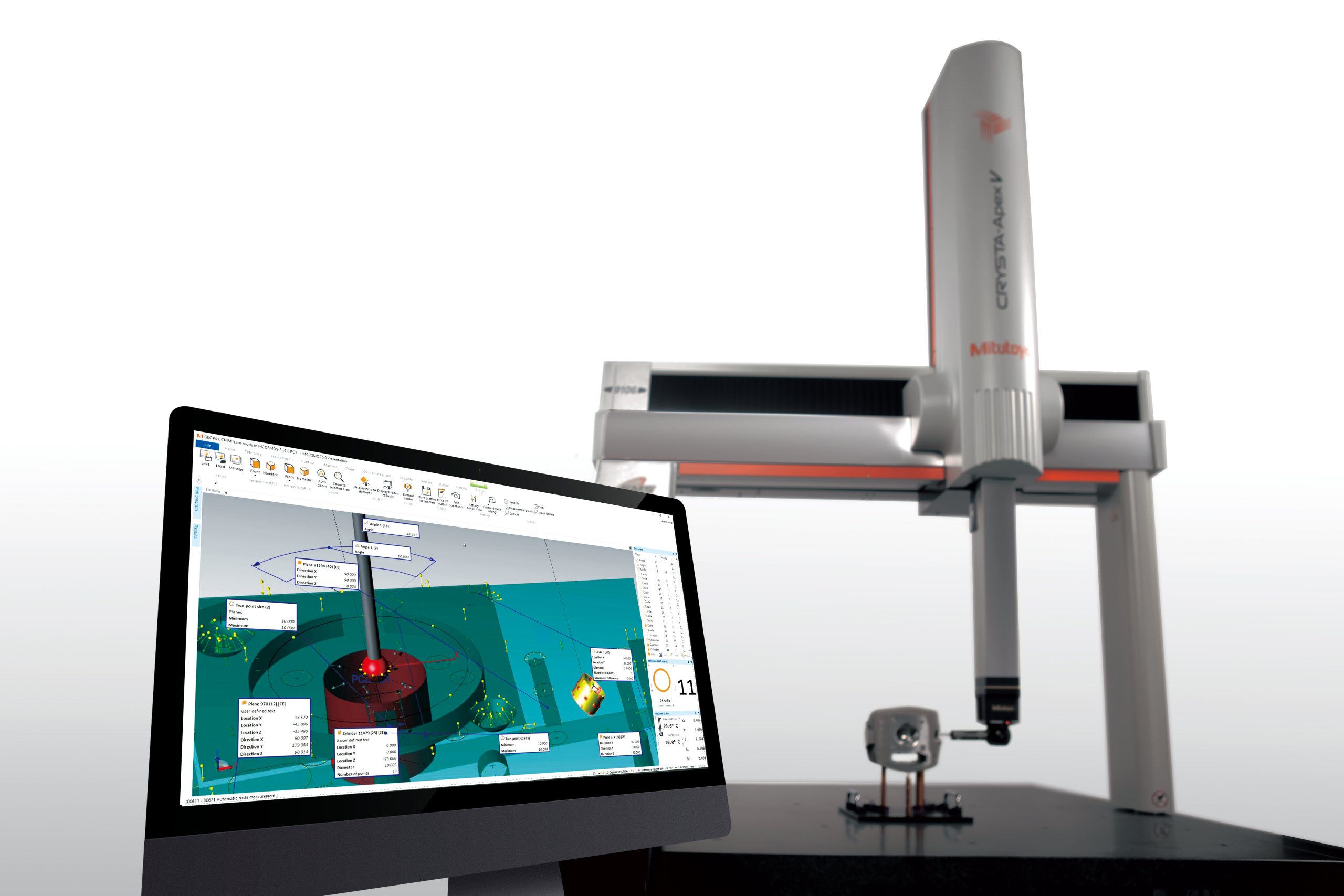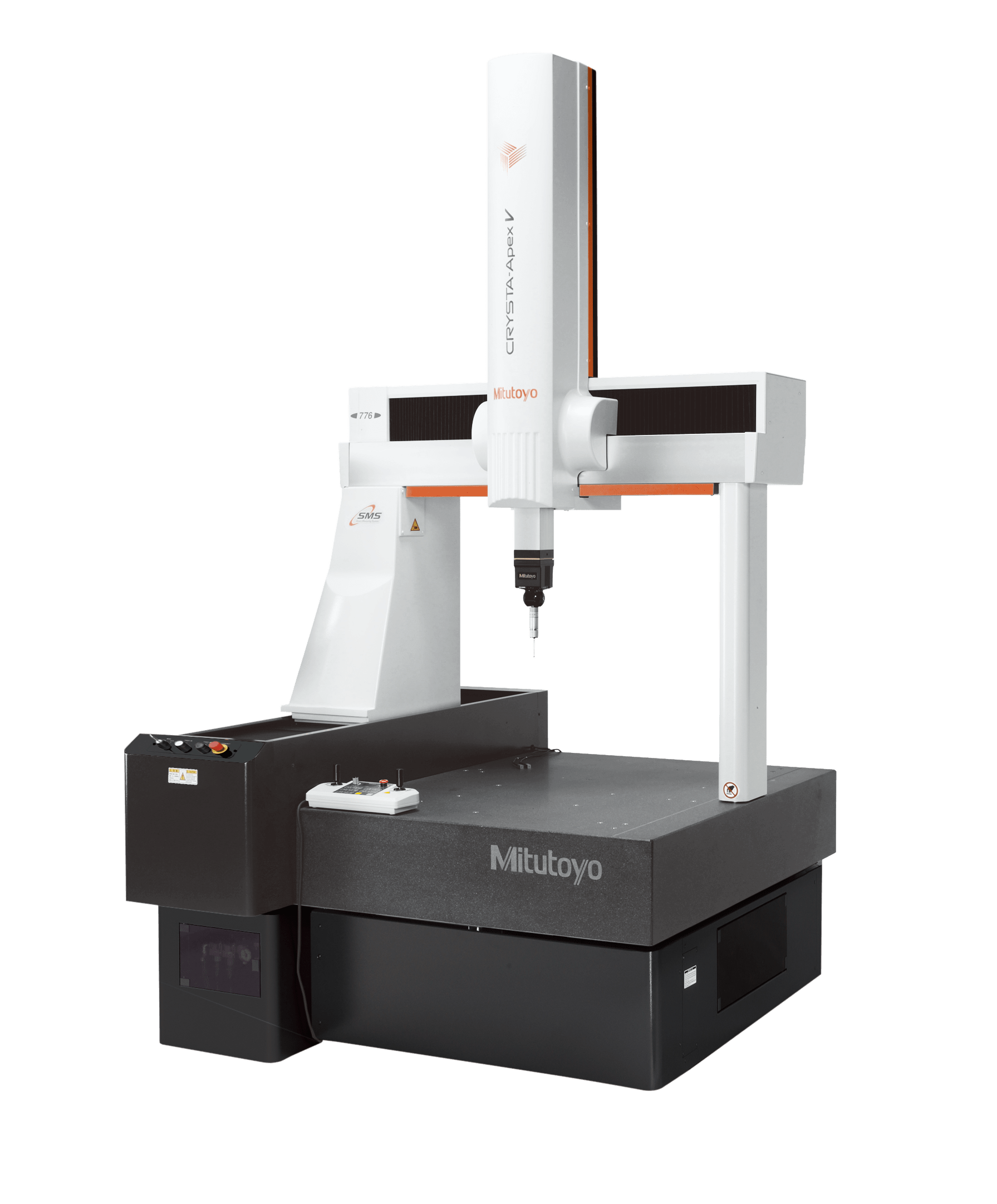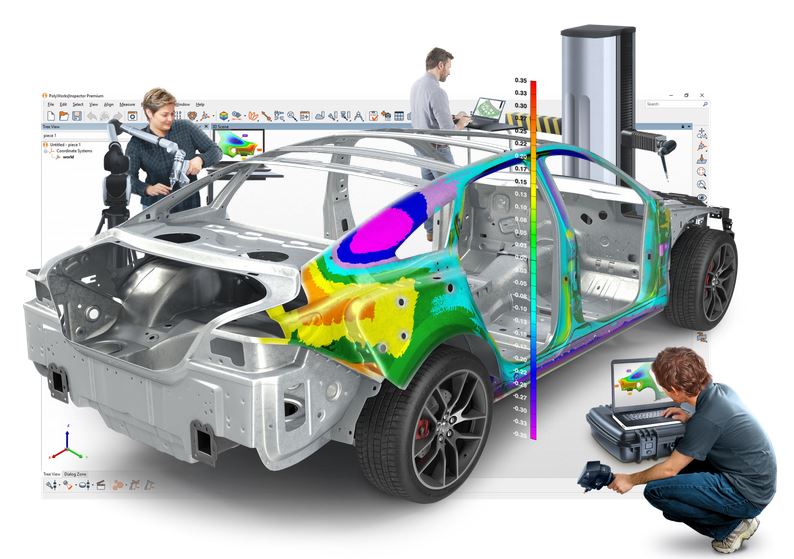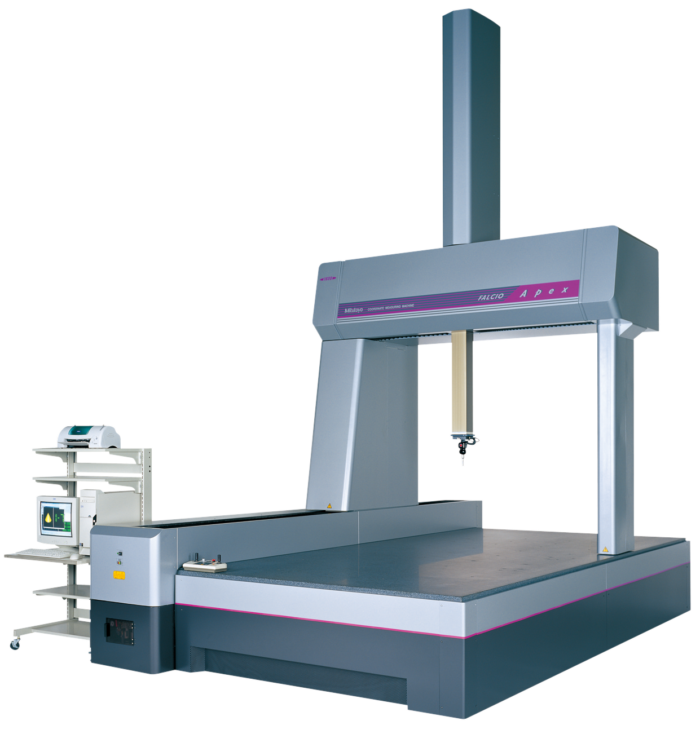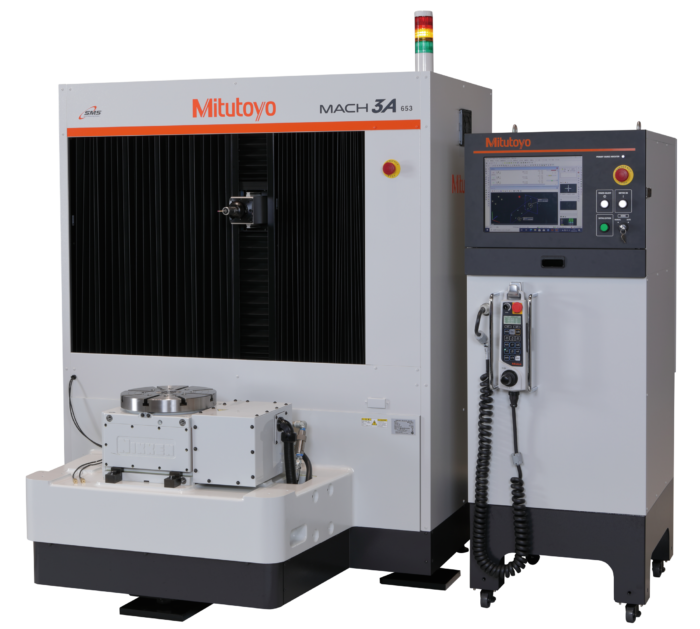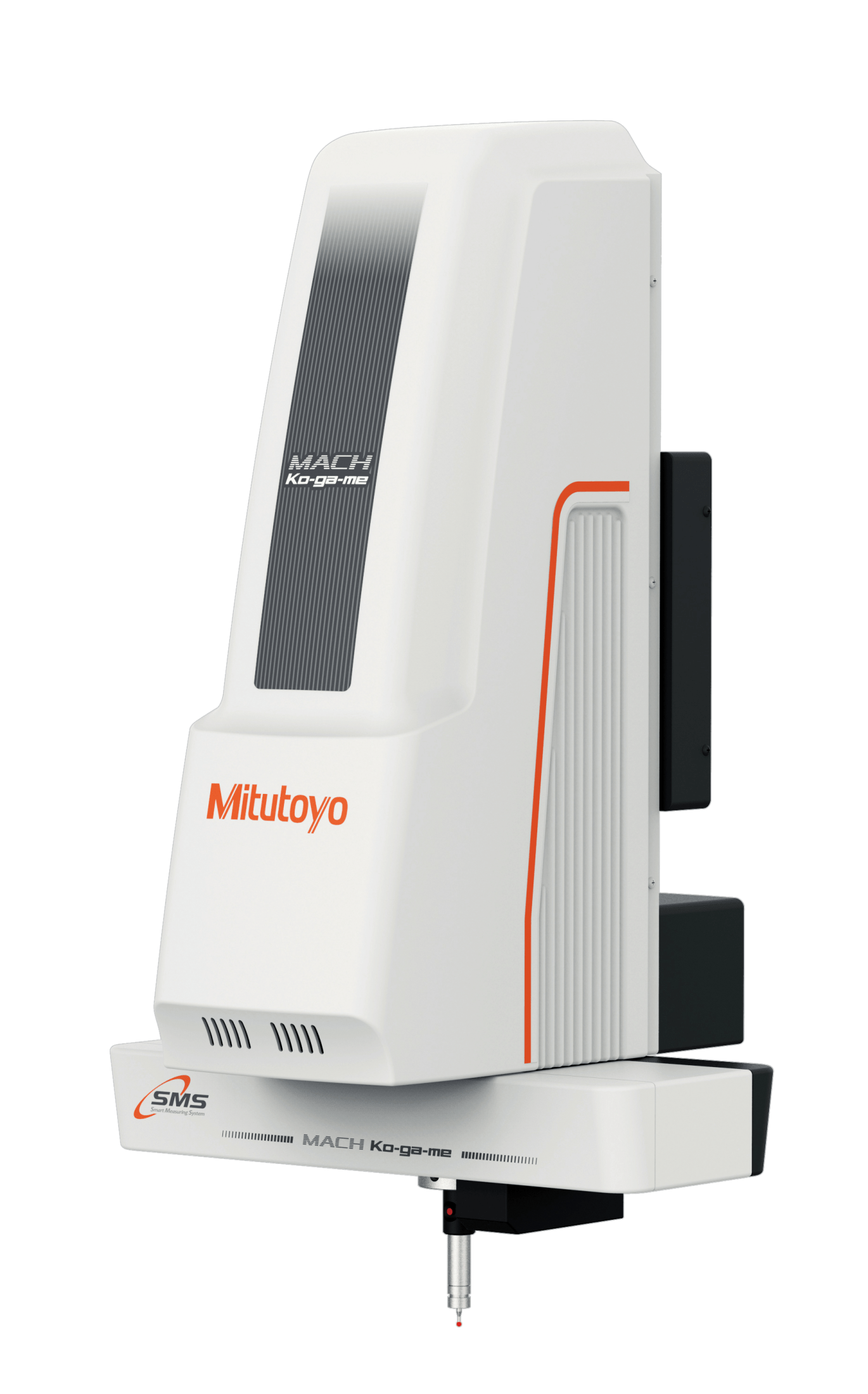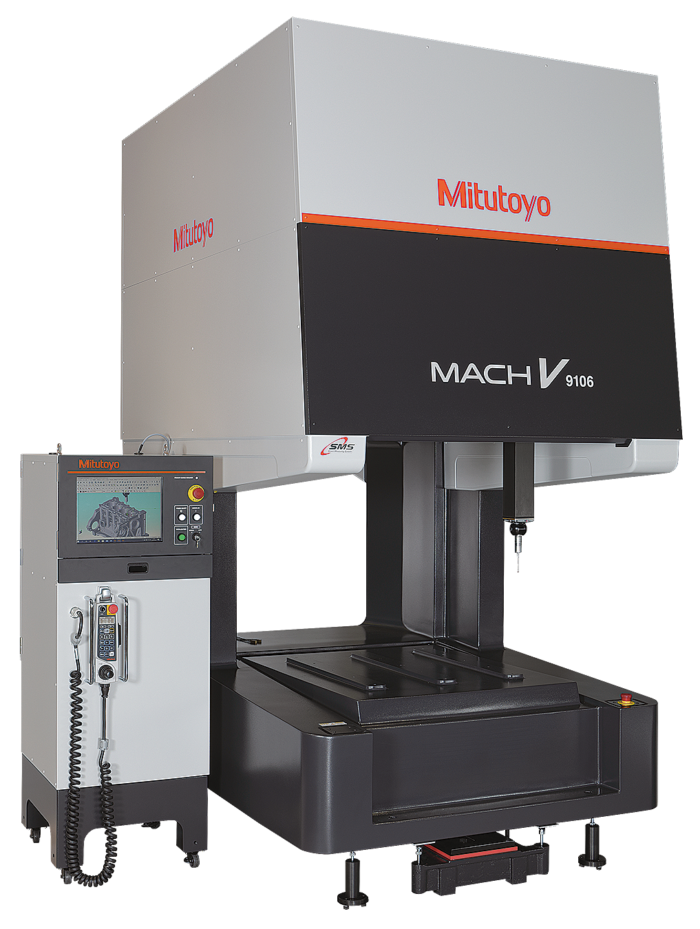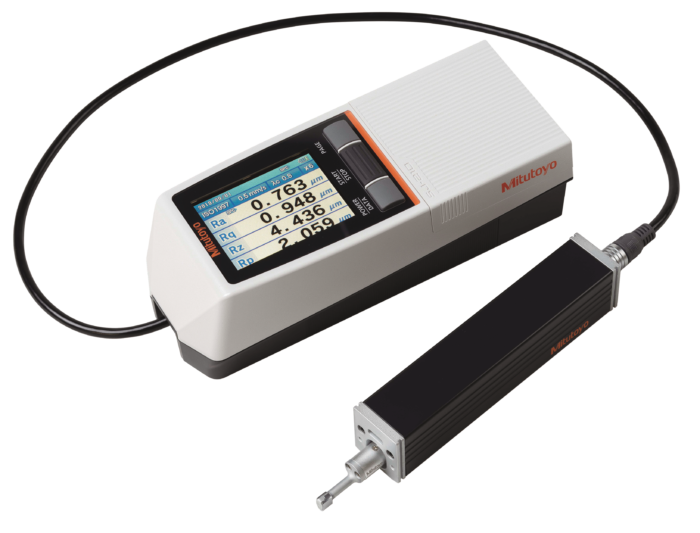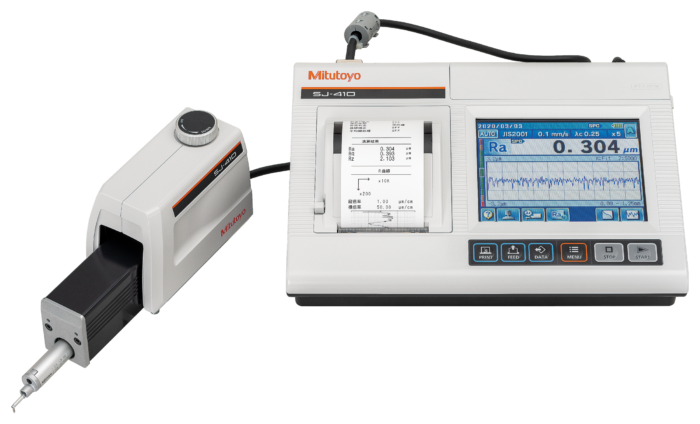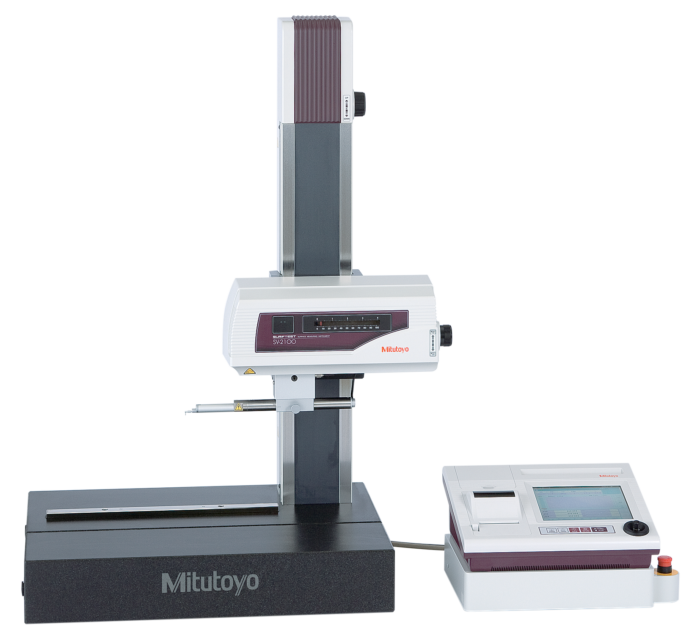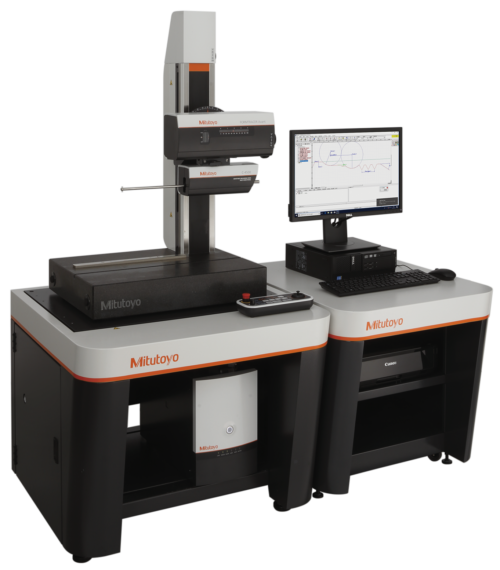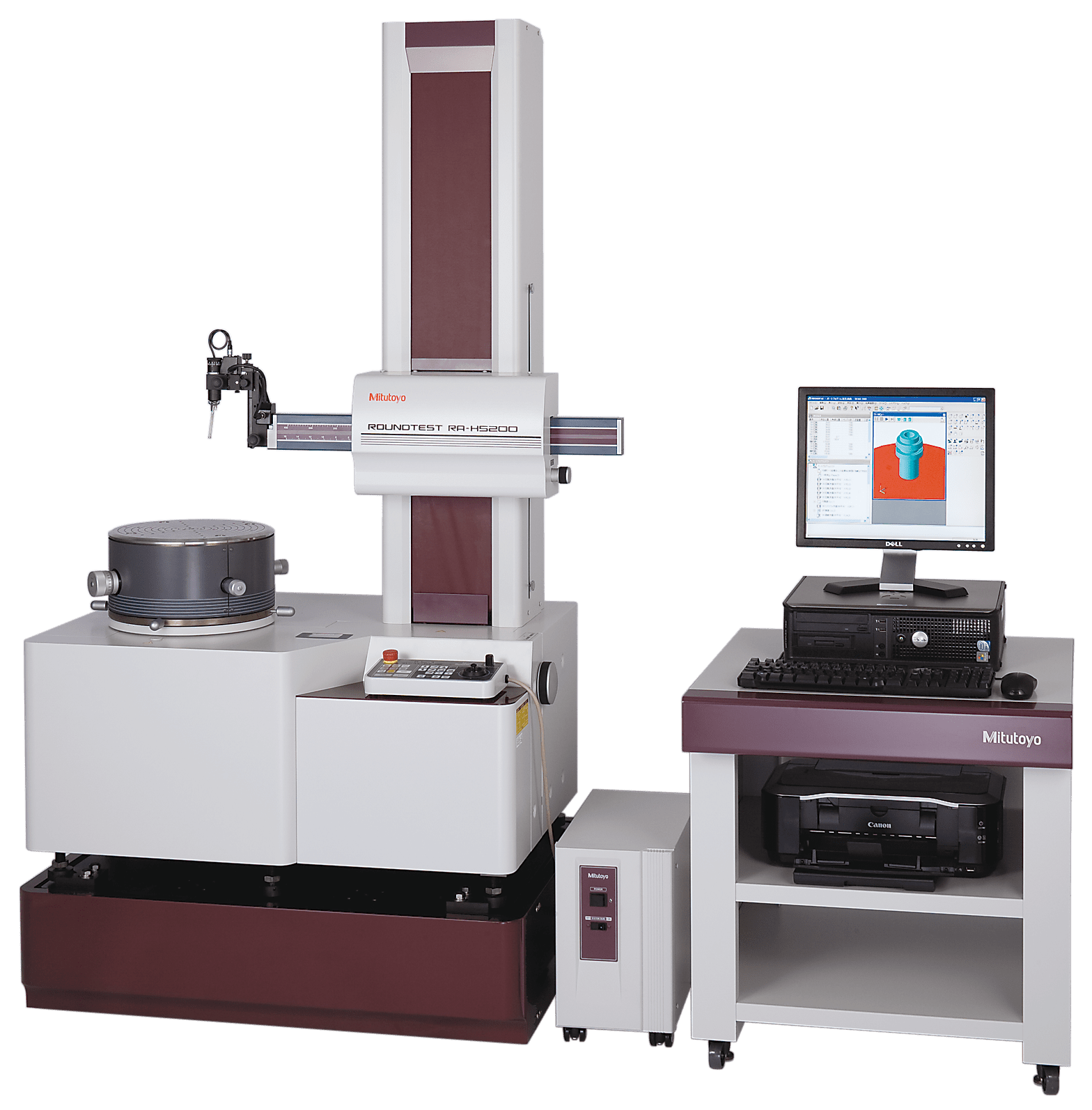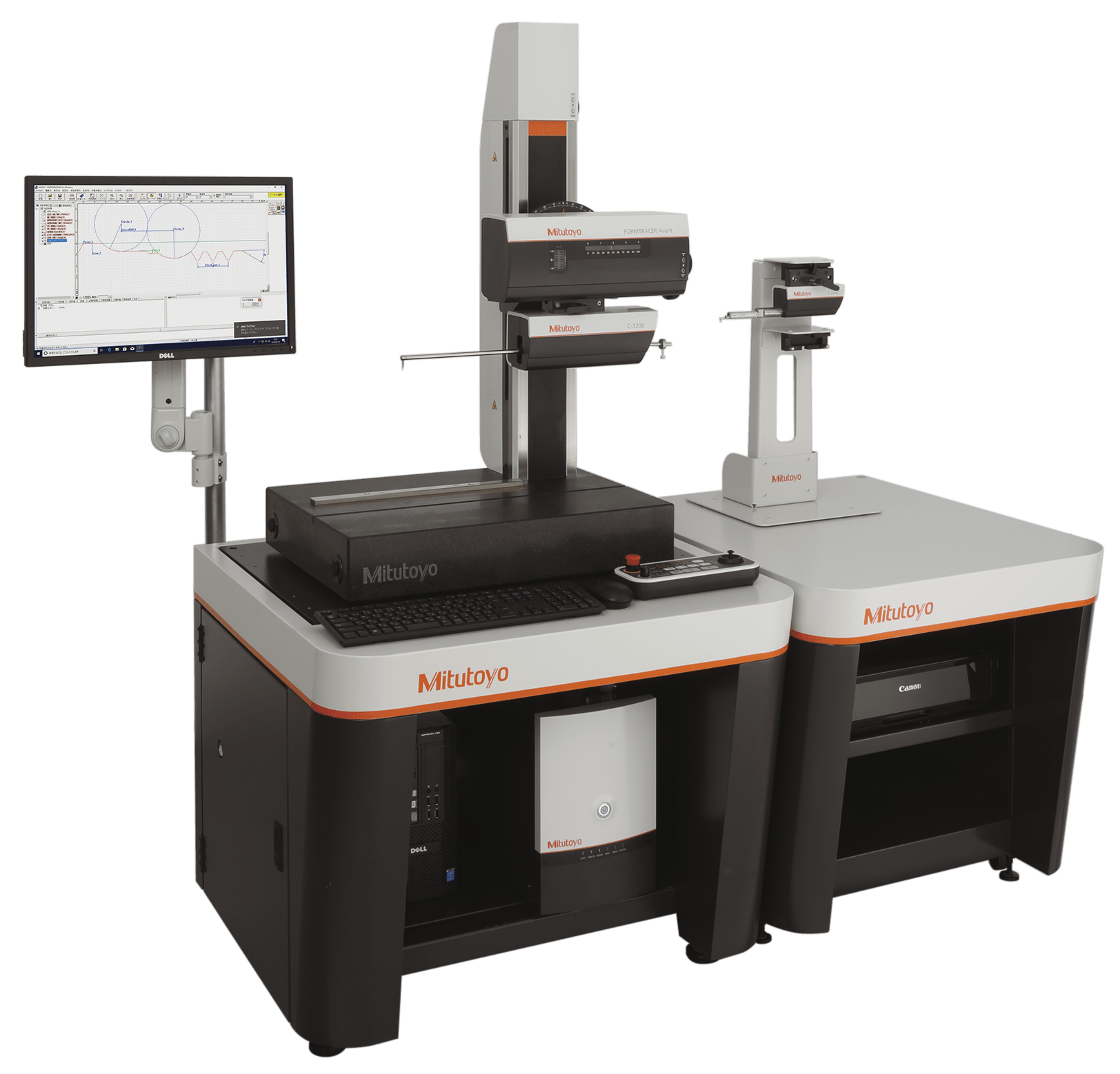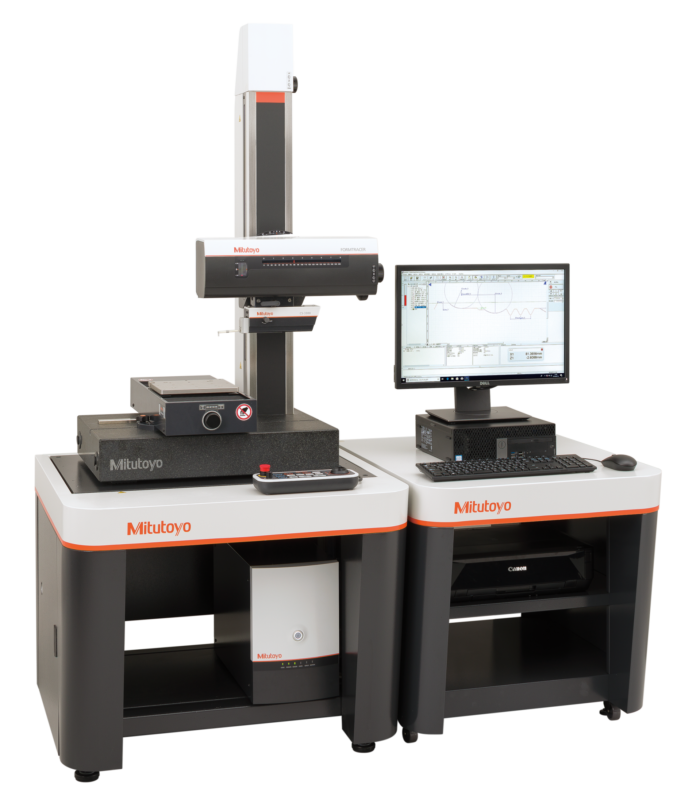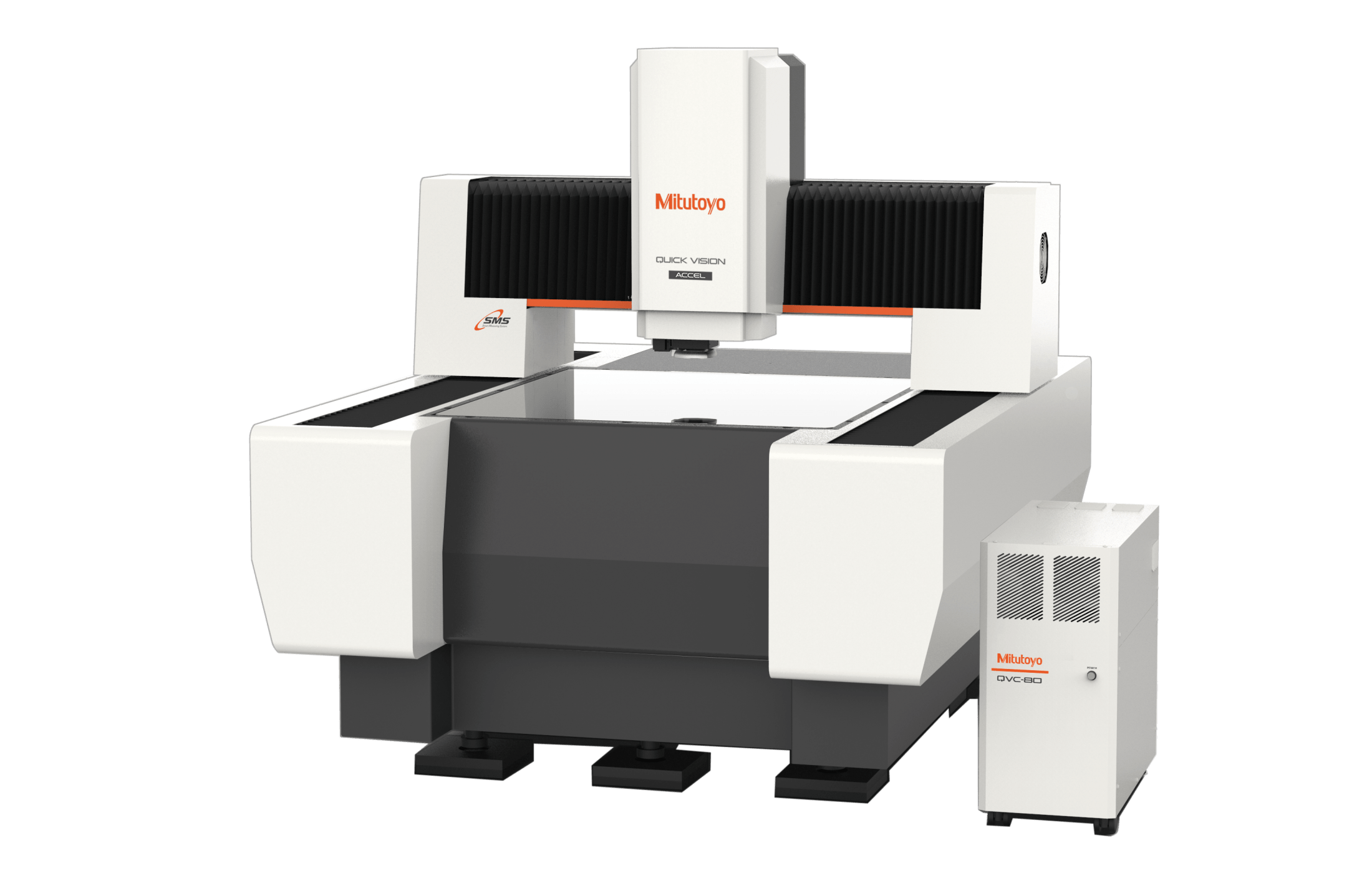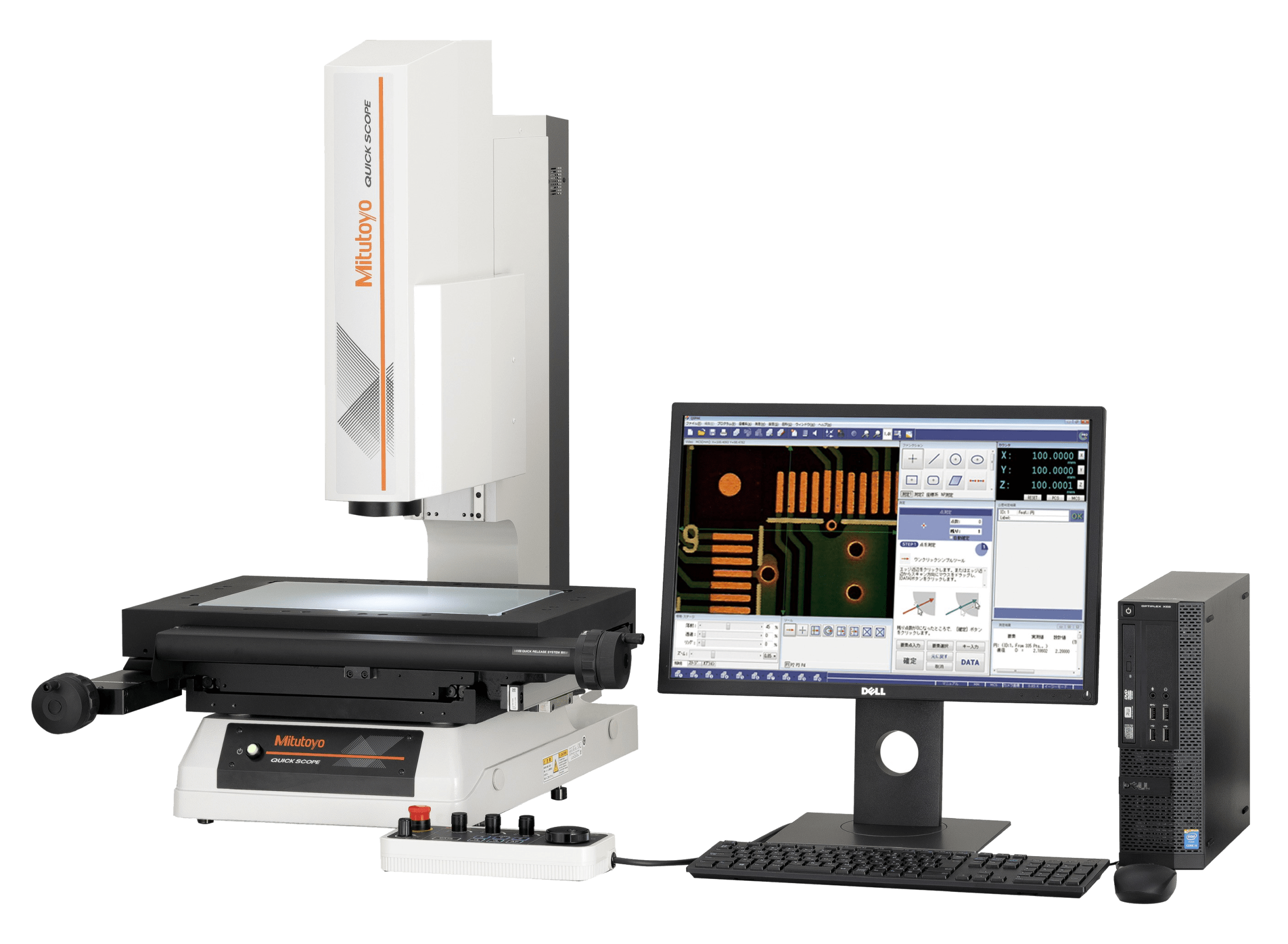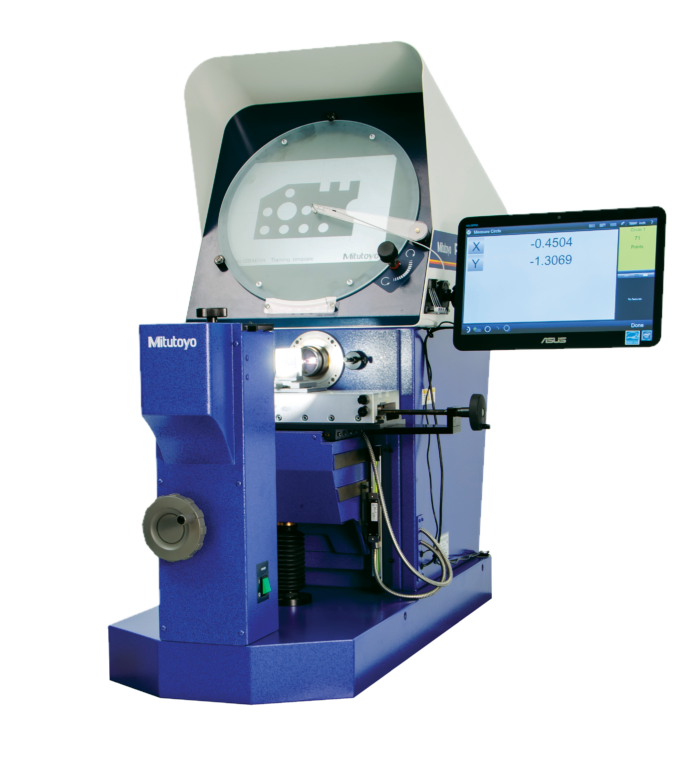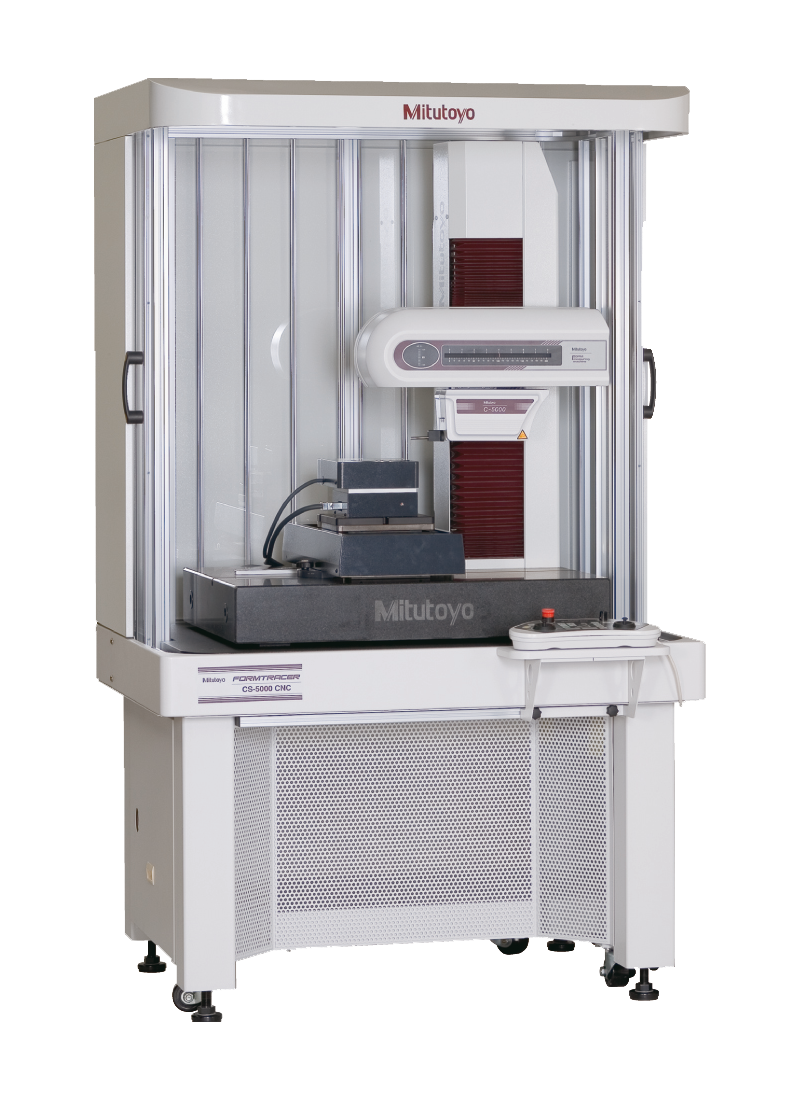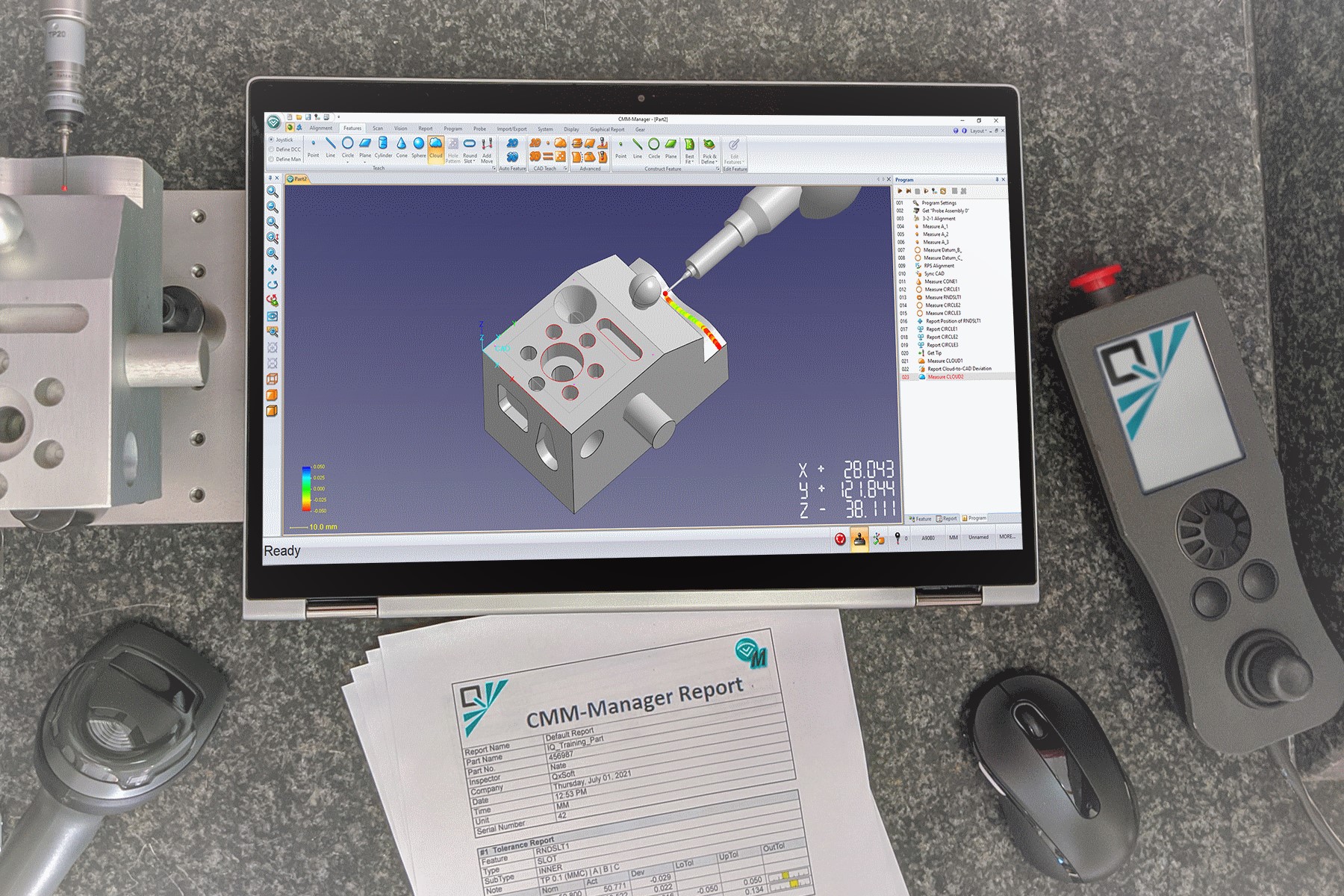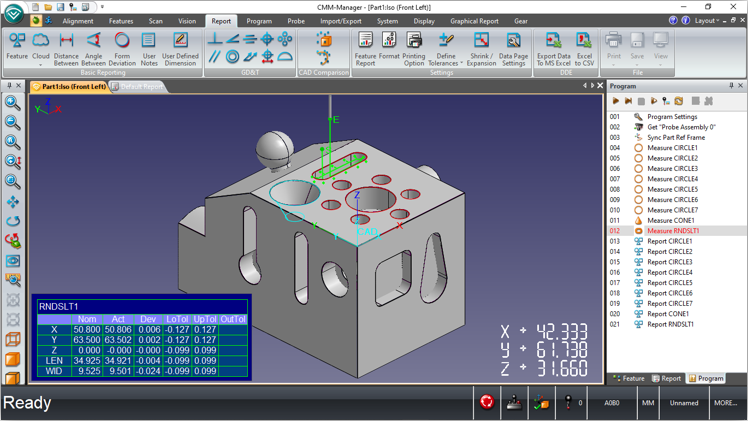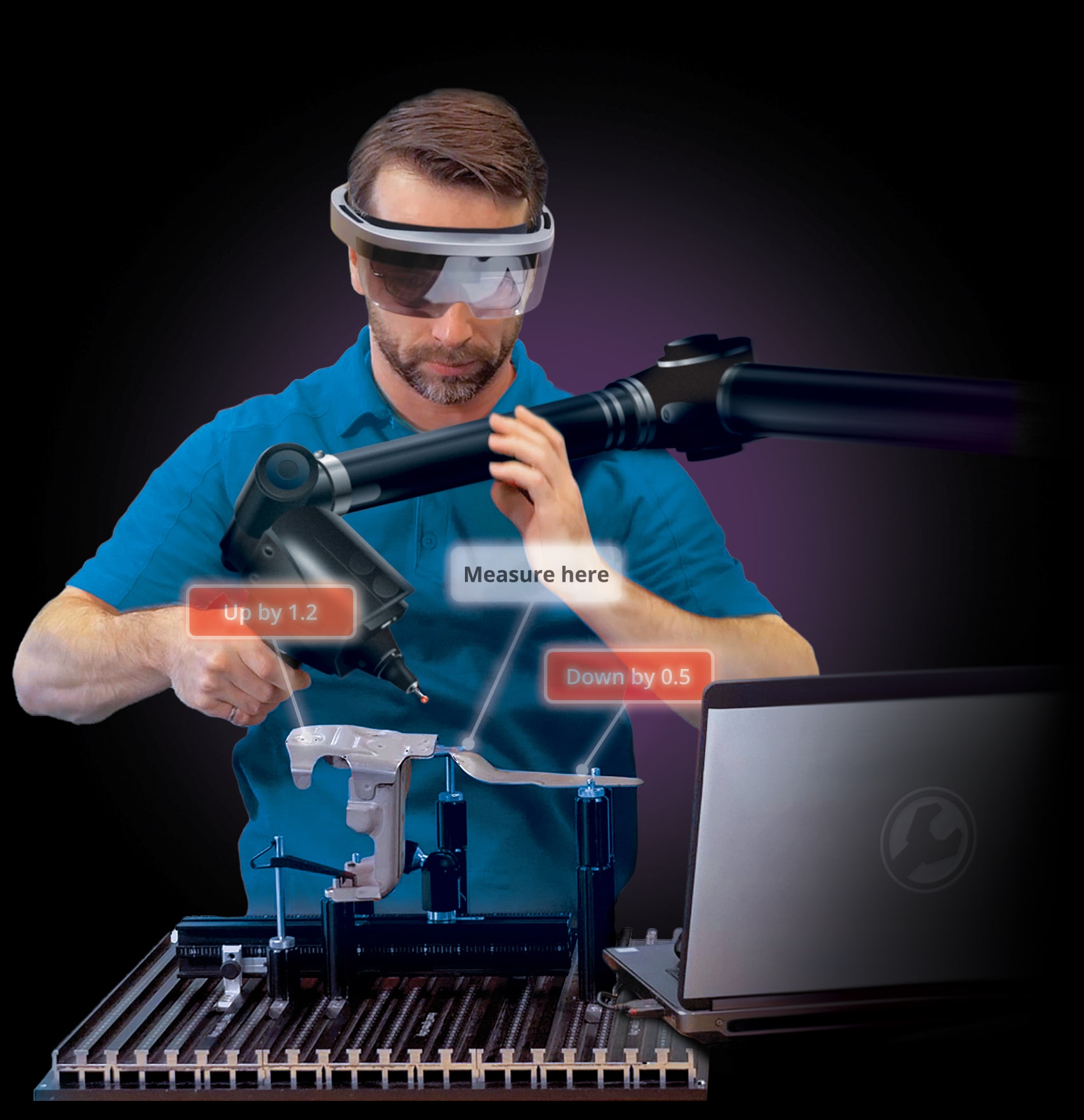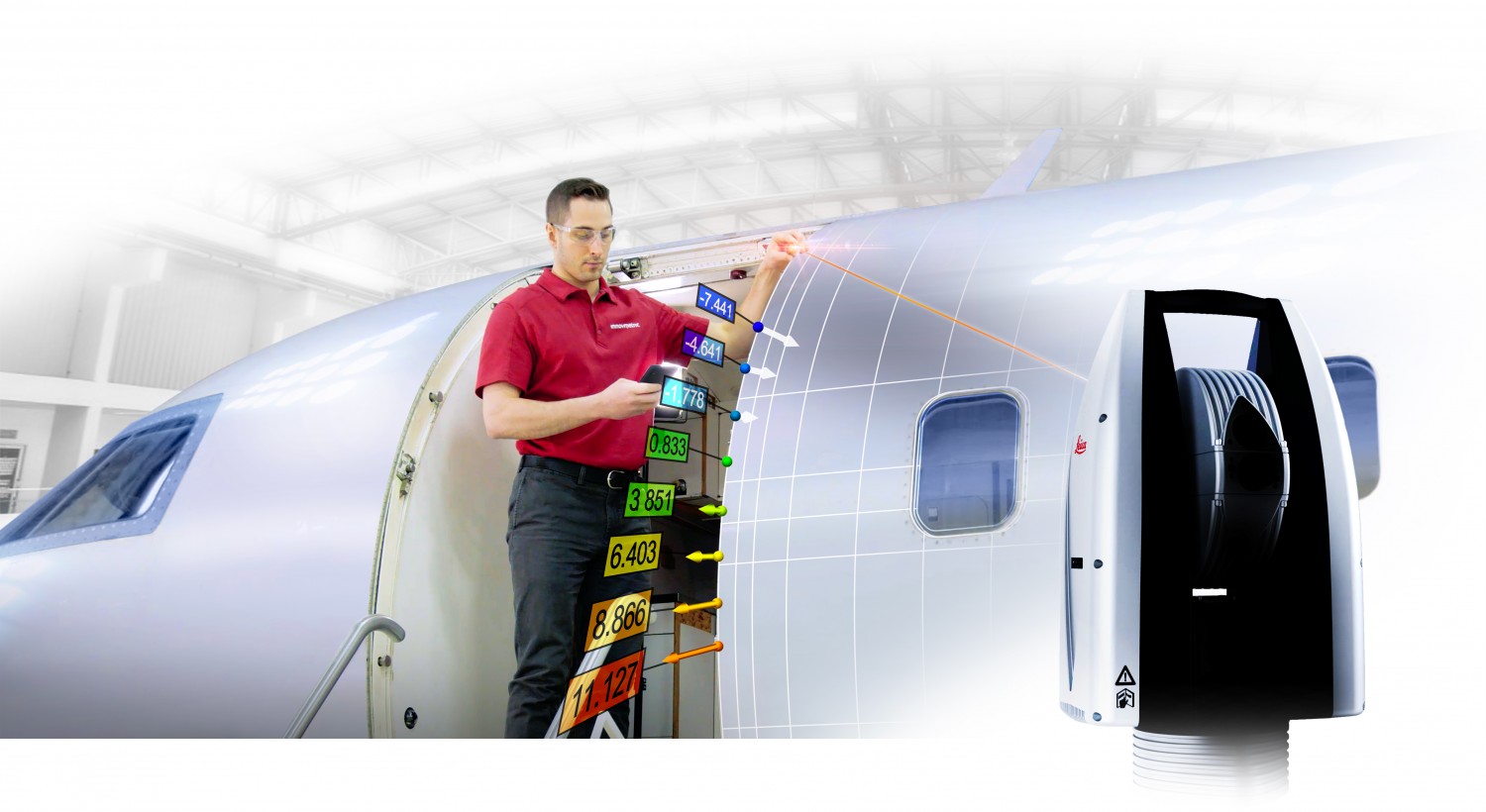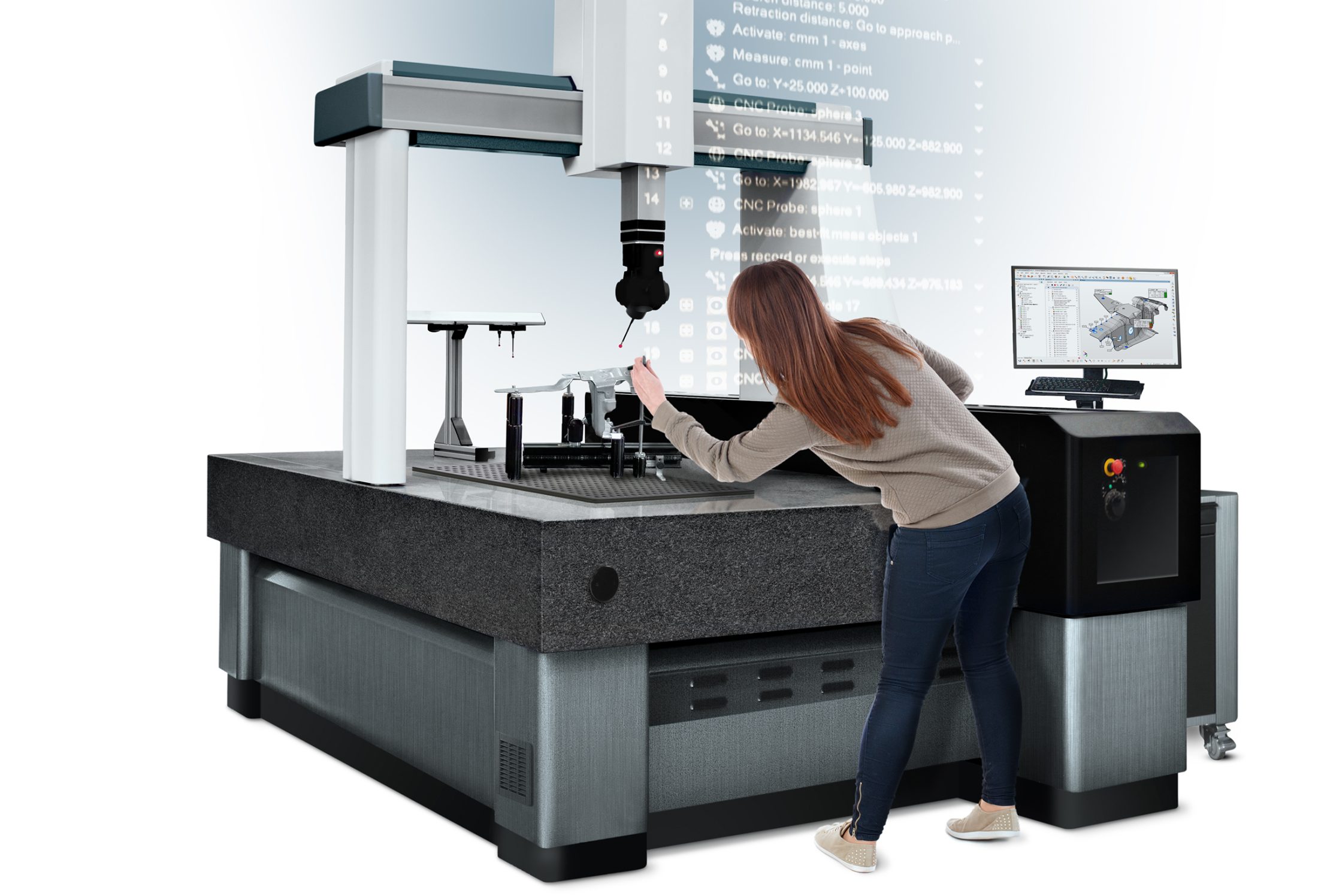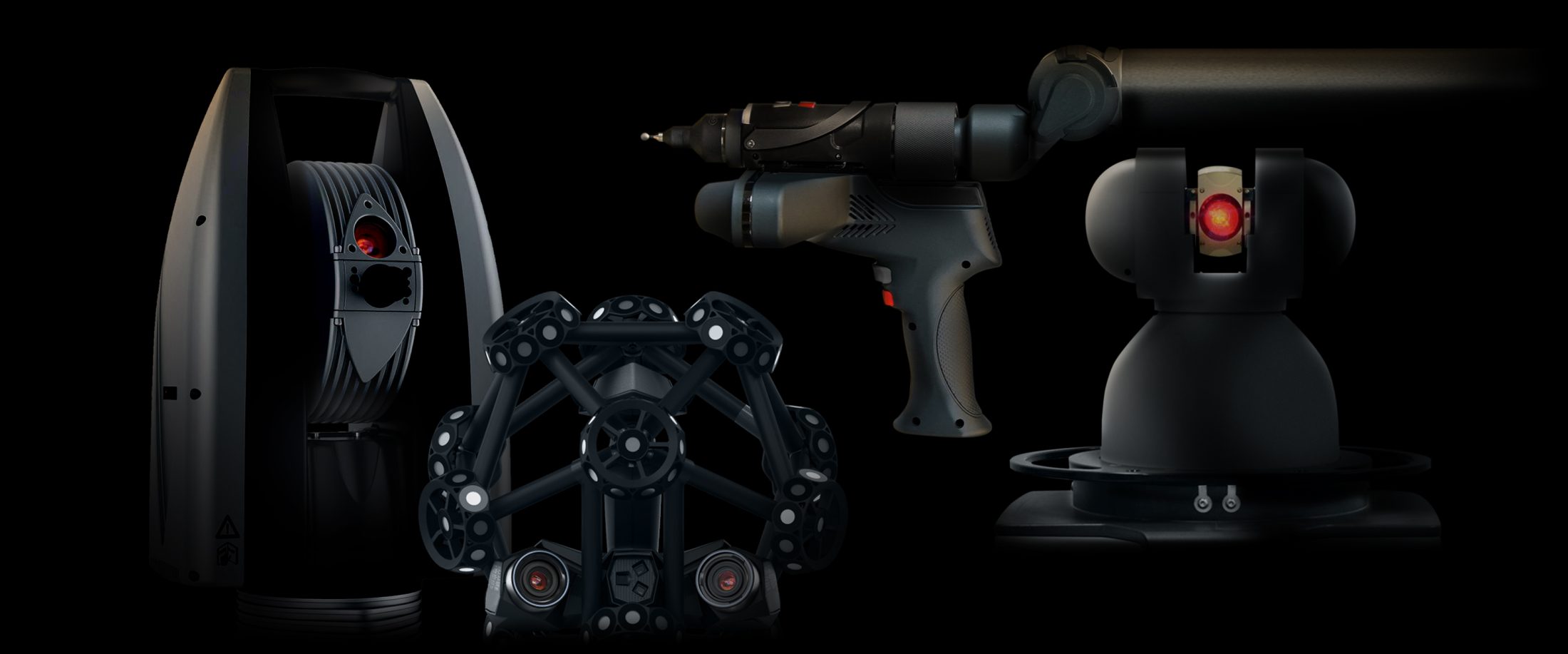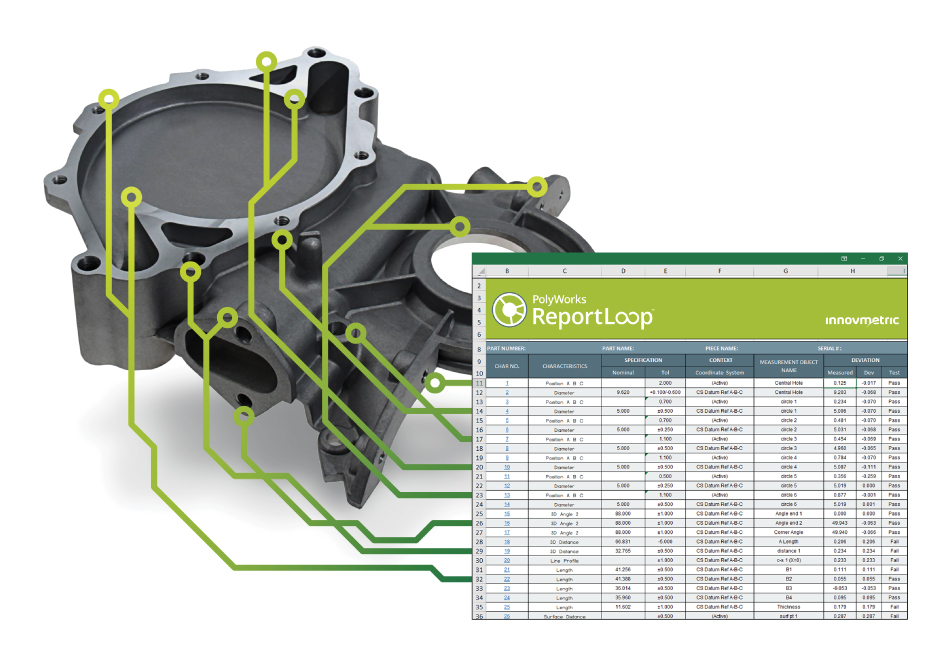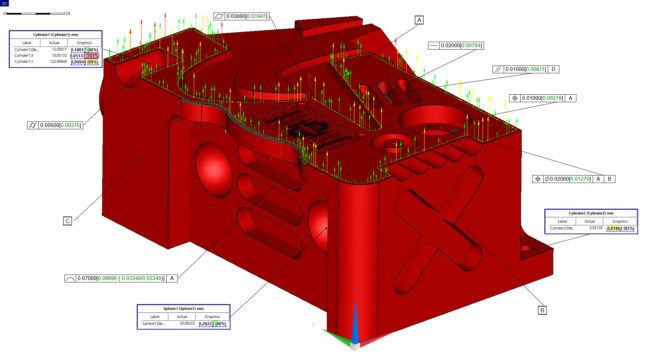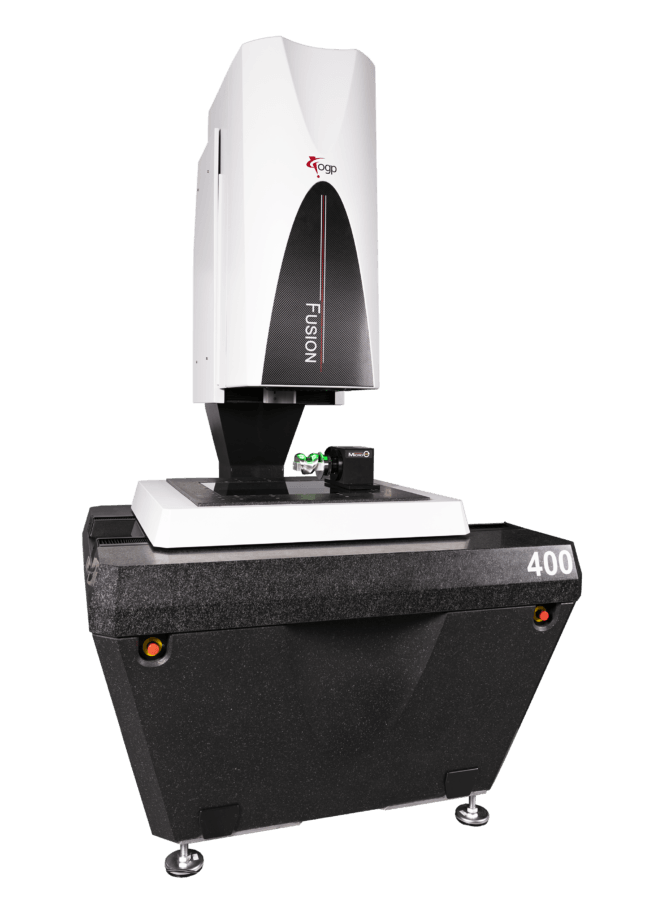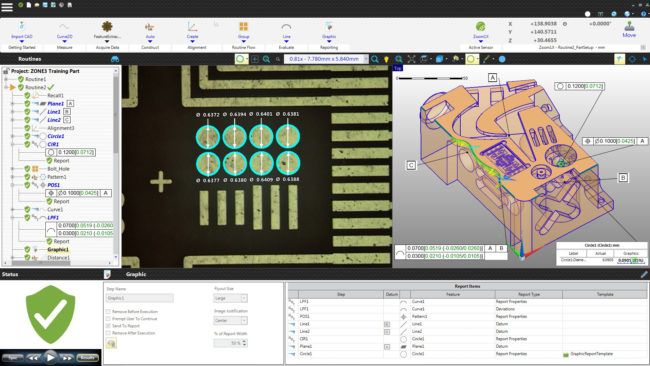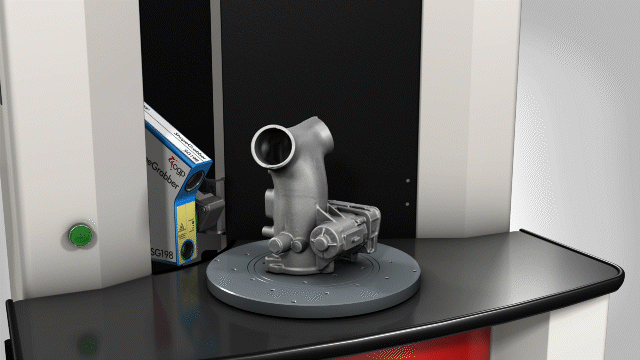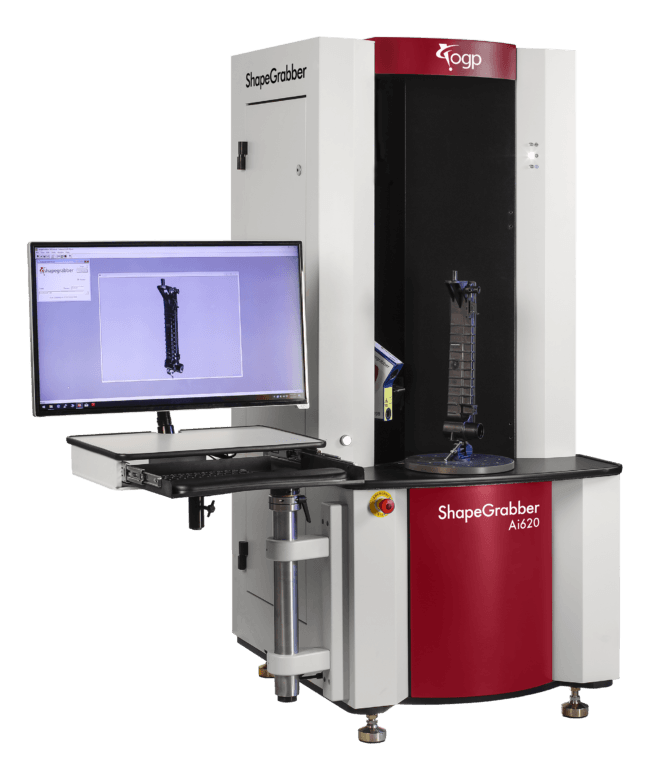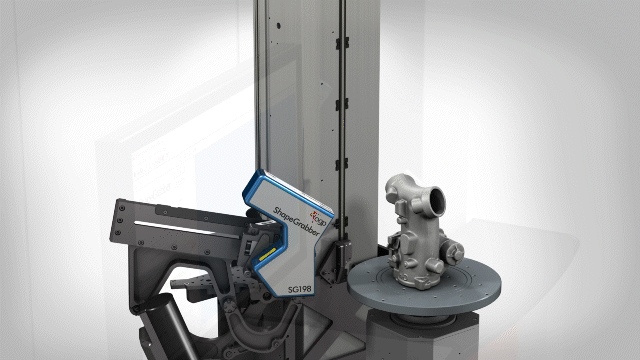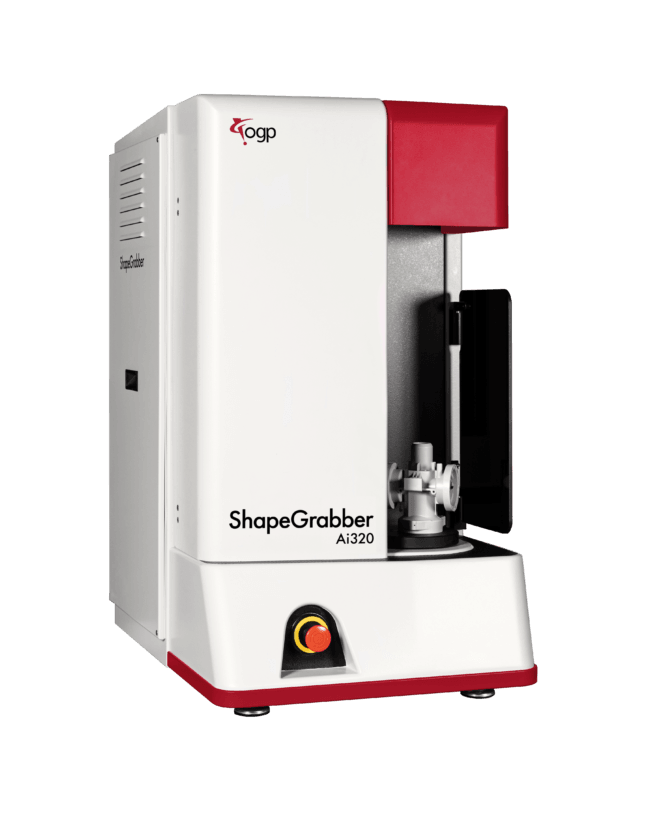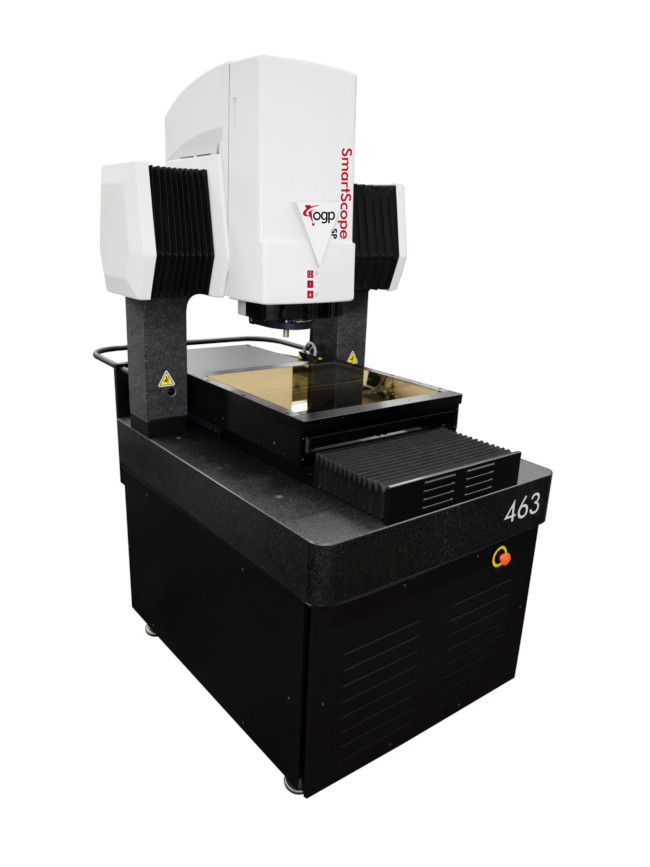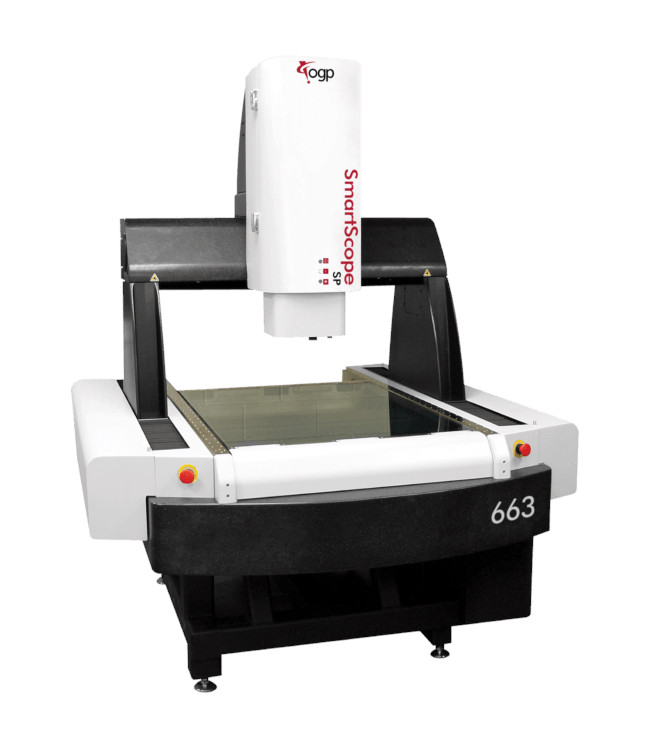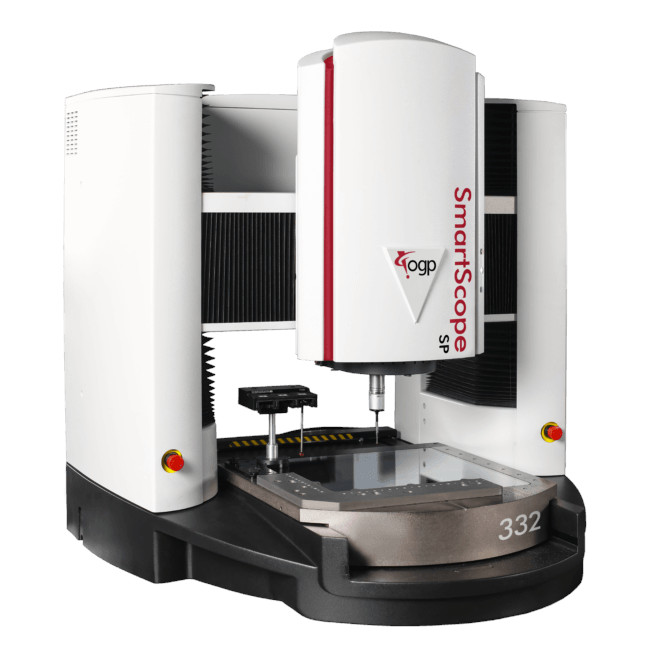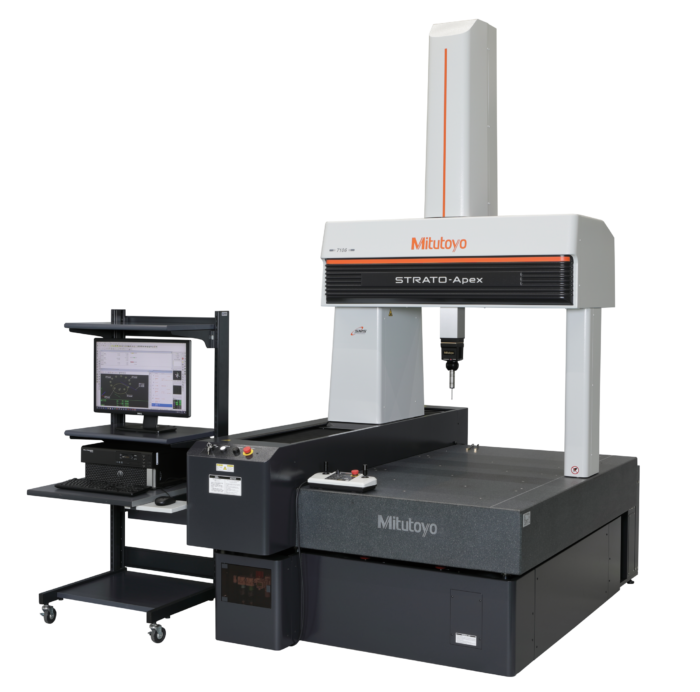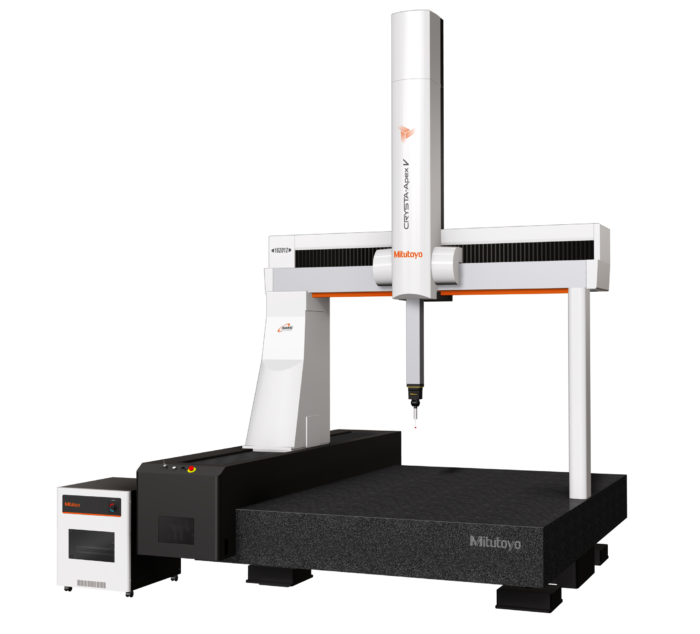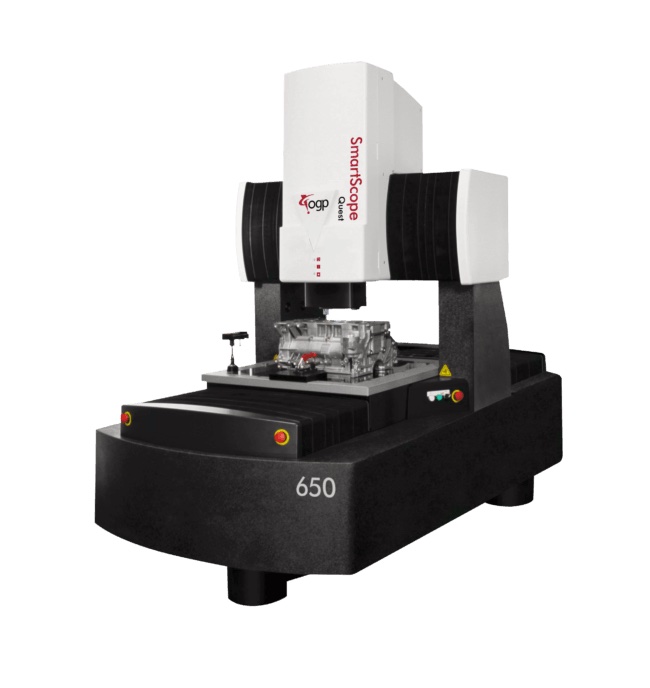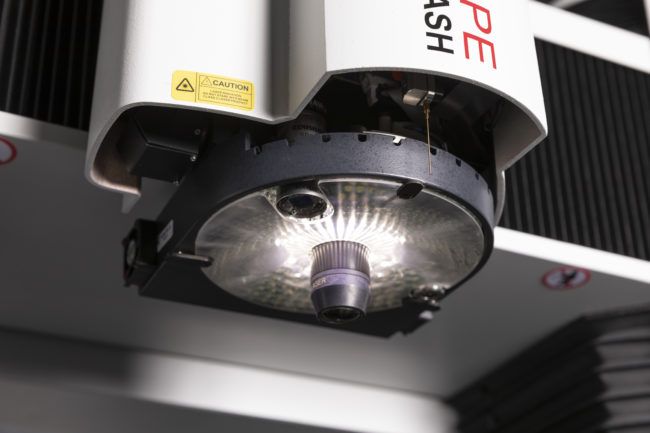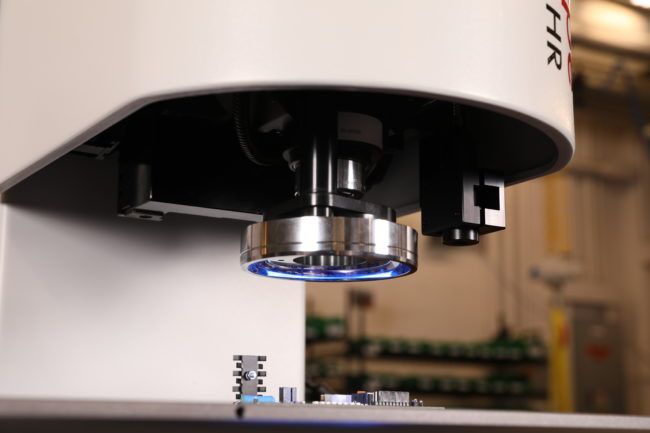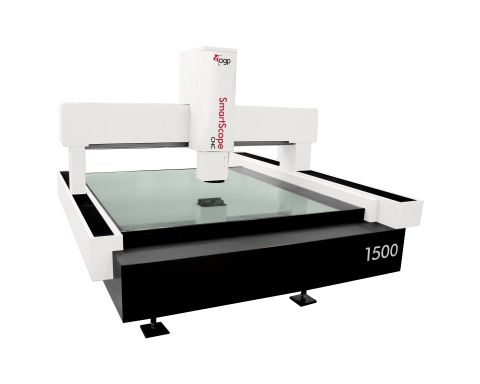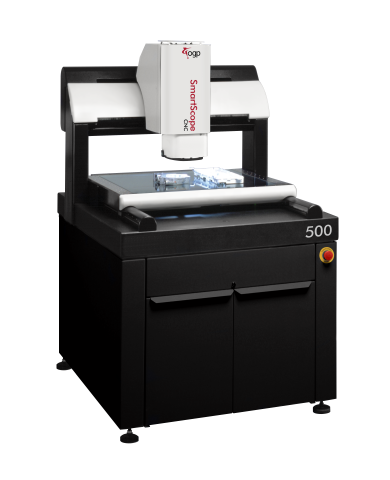The Mitutoyo Quick Vision ACCEL CNC Vision Measuring System was designed with a primary focus on measurement speed and efficiency. The machine drives the X- and Y- axes at 400 mm/s.
industries
Tooling, Mold, and Die Metrology Equipment

Metrology systems and solutions can provide tremendous value for your company in the tooling, mold, and die manufacturing industry. As you work to produce high-quality tools, molds, and dies, implementing the right metrology processes and equipment can optimize your quality, efficiency, and capabilities.
Overview of Metrology
Metrology is the science of measurement. It involves using precise measurement tools and techniques to analyze dimensional, geometric, and other physical characteristics of objects, parts, and products.
In manufacturing, metrology is a critical part of your quality assurance and process control. By taking precise measurements, metrology provides valuable data that you can use to monitor variability and correct deviations from product specifications. This helps ensure that your end products meet required tolerances and stringent quality standards.
Metrology equipment includes instruments like coordinate measuring machines (CMMs), optical comparators, vision systems, laser trackers and scanners, and more. Your metrology labs may also utilize specialized software for analyzing measurement data.
Key Benefits of Metrology
Implementing metrology solutions provides many advantages for your company’s tooling, mold, and die production:
Improved quality control
Metrology gives you the measurement data needed to actively monitor your production quality. This allows you to catch errors early, before defective molds, dies, or tools are put into use. By inspecting parts during all stages of the production process, metrology helps your tooling company deliver exceptionally consistent, high-quality products to your own customers.
Better process control
The insights gained from metrology data allow you to spot inconsistencies and tweak processes before small issues turn into large problems. This prevents waste and inefficiency. Metrology enables a data-driven approach to incrementally improving your fabrication and machining processes.
Faster throughput
Metrology helps your tooling facilities streamline production workflows. Taking an optimized approach to quality control inspections, rather than inspecting every part, can speed up your processes without sacrificing quality. This increased efficiency enables higher manufacturing throughput for your company.
Design and engineering support
Metrology provides critical data that your tooling engineers can use to refine designs, improve simulation models, and optimize tool performance. By linking measurements to CAD models, metrology enhances your capabilities in design analysis, prototyping, and troubleshooting.
Documentation for traceability
Metrology provides documentation that demonstrates your company’s commitment to quality. Detailed measurement data for individual molds, dies, and tools provides traceability over their full lifecycle. This supports your defect analysis, failure investigations, preventative maintenance, and more.
Reverse engineering abilities
Metrology measurement data allows you to reverse engineer existing tools, molds, and dies. This facilitates replacement part fabrication, revisions of legacy hardware, and other applications for your business. It also aids in creating 3D models from your physical parts.
Streamlined product development
The insights gained from metrology allow for more efficient design analysis, prototyping, and new product introduction processes. This accelerates the development of innovative new tooling solutions for your company.
Metrology Applications for Tooling, Mold, and Die Production
Metrology has widespread applications throughout your tooling, mold, and die production workflow. Here are some examples:
- Incoming inspection of raw cast iron blocks, aluminum plates, steel bars and other stock materials to verify quality before CNC machining into cores, cavities and other finished components. This prevents wasted time and cost from fabricating with faulty materials.
- Laying out precise datum reference points on stock blanks to orient CMM probes, establish part zero positions for CNC mills and wire EDMs, and aid in workholding setups. Accurate datums are essential for machining accuracy.
- Thoroughly measuring and analyzing dimensions, geometries, draft angles, radii, hole positions, surface finishes and other attributes on initial mold and die samples such as the first off tools. This confirms that your machining processes are executing correctly before committing to full production runs and prevents potential scrap losses.
- Periodically measuring sections, inserts, cavities and other components at different stages during the machining process. This allows your team to identify and correct any emerging deviations from specifications early on before final heat treatment and assembly.
- Final verification checks before shipment or mold trials that finished tools meet all your customer’s drawing requirements for dimensions, geometries, tolerances, surface finish specs, and other critical attributes. Complete inspection provides quality assurance and protects your reputation.
- Analyzing dimensions and surface finishes on molded sample parts during mold tryouts and initial debugging. Comparing datasets confirms tools are producing compliant components before ramping up to full rate production.
- Tracking tool wear, distortion trends, and dimensional changes during high volume production runs. Metrology reveals optimal windows for maintenance, when to schedule replacements, and maximizes your tooling productivity over full lifecycles.
- Matching the performance of multiple versions of duplicated molds and dies by comparing metrology datasets. This allows balancing workloads across parallel production lines or cells to optimize overall throughput.
- Concrete validation through measurement that revisions, texture modifications, material upgrades and other engineering changes achieve their intended purposes and deliver real performance improvements.
- Identifying root causes when fabrication processes experience issues by comparing metrology data captured before and after breakdown events. The insights aid your investigation and corrective actions.
- Monitoring decreasing measurement accuracy and new anomalies appearing over a tool’s usage lifetime. This data predicts optimal timing for preventative maintenance before failures cause unplanned downtime.
- Detailed forensic wear pattern analysis when tools unexpectedly fail or break. Metrology mapping provides insights into damage modes, service loads, and other factors that caused premature tooling failures.
- Reverse engineering obsolete and worn out legacy tooling by using laser scanner metrology systems to rapidly capture high resolution 3D point clouds of existing parts. This enables replacement fabrication.
- Data-driven design optimization relies on objective metrology insights. Measurements reveal where improving drafts, tightening tolerances, removing unnecessary stock and other changes can enhance performance, durability and manufacturing efficiency.
Recommended Metrology Solutions
To maximize quality and efficiency gains, you should implement a selection of metrology systems matched to your specific production challenges and applications.
Here at Great Lakes Metrology, we stock a wide range of precision metrology equipment ideal for your tooling industry needs, including:
CMMs
CMMs with touch probes and laser scanners conduct fast, highly repeatable measurements of your finished tools, molds, and dies. They also aid in aligning parts, mapping wear, conducting failure analysis, and creating digital CAD models via reverse engineering. Different CMM platforms offer various size capacities and measurement methods to meet your needs.
Vision systems
These optical systems use cameras, processing software, edge detection, and other techniques to perform non-contact inspection. They excel at measuring complex contours, angles, radii, and hard-to-reach features on your finished molds, dies, and tooling.
Form testers
Specialized instruments precisely measure surface form error, cylindricity, conicity, straightness, and other shape attributes on your finished tools, mold cores, cavities, inserts, and other complex parts.
Laser trackers
Laser trackers measure your tooling part positions during operation to monitor distortion trends over time. Laser line scanners also map tool surfaces to characterize wear patterns.
Optical comparators
These time-tested inspection tools project magnified images that your technicians can quickly analyze to verify dimensions and geometries. They provide efficient pass/fail inspection and initial troubleshooting.
Roundness/cylindricity analyzers
These instruments conduct specialized analysis of cylinders, bores, bosses, holes, and other critical features to ensure molded components meet your concentricity and cylindricity requirements.
Surface finish testers
Measure surface roughness specs on your cavity interiors and other critical molding surfaces. This predicts and validates performance for your customers’ part appearance needs and mold release requirements.
Our experienced application engineers work alongside your team to optimize your measurement processes and select the best equipment for your needs. We also provide installation support, user training, NIST-traceable calibration, and ongoing service for the metrology solutions your company invests in.
Investing in the right metrology solutions will provide tremendous quality, efficiency, and performance benefits as your company strives to excel in the competitive tooling, mold, and die production industry. Contact the metrology experts at Great Lakes Metrology today to discuss how we can help advance your manufacturing operations.
Metrology is Essential for Tooling, Mold, and Die Manufacturers
Implementing a robust metrology program delivers significant advantages for your tooling, mold, and die production operations. The measurement data and insights provided by precision metrology systems allow your company to:
- Optimize processes to reduce waste, speed up production, and boost quality
- Perform proper quality control to meet your customer requirements and specifications
- Support engineering tasks like design analysis, simulation model refinement, and new product introduction
- Conduct root cause analysis and corrective action when production problems occur
- Maximize productivity over the full lifecycle of your molds, dies, and production tooling
With the right metrology solutions in place, you gain the objective data needed to actively refine and improve all aspects of your fabrication workflows. Metrology provides the feedback loop for enabling quality, efficiency gains, and driving innovations in your tool performance. For these reasons, metrology is an indispensable enabler for successful tooling, mold, and die production in today’s highly competitive manufacturing marketplace.
Contact us today for all your metrology equipment needs.
FAQs About Metrology for Tooling, Mold, and Die Manufacturing
Q: How can metrology aid in optimizing my machining and EDM processes?
A: By measuring machined parts at different production stages, metrology provides data about process variability. This allows dialing in optimal feeds, speeds, stepovers, and other parameters to minimize your tool wear, prevent tool breakage, and maximize material removal rates. Metrology verifies that your CNC programs accurately execute the CAD model.
Q: What metrology solutions can help me speed up my inspection workflows?
A: Multi-sensor CMMs with touch probes, laser scanners, and vision capabilities can conduct fully automated inspection routines faster than manual techniques. This avoids bottlenecks at your incoming materials, first article, and final inspection stages.
Q: How does metrology data help my engineering team refine part designs?
A: Metrology reveals potential design improvements by showing where extra stock allowance was unnecessary or where tolerance ranges could be tightened to prevent your wasted time and materials. This metric-driven data aids optimization.
Q: Can metrology support my preventative maintenance and tool life management efforts?
A: Yes. Metrology provides concrete data about your tool wear patterns, revealing when superficial damage begins accumulating into a critical failure risk. This predicts optimal windows for your maintenance and tool replacements.
Q: What metrology solutions support reverse engineering my legacy and obsolete tooling inventory?
A: Laser scanner-equipped metrology systems can rapidly capture millions of data points to map your existing tooling in high resolution. This creates complete 3D point clouds to enable replacement fabrication.
Q: How can metrology help me prove out revisions and upgrades to my tooling designs?
A: When changes are made, metrology provides the hard evidence that revisions like polishing out textures or upgrading to a new material actually achieve their intended purpose and deliver measurable improvements for your company.
Tooling, mold and die

L100 CMM Laser Scanner
quick view
XC65Dx CMM Laser Scanner
quick view
CARBstrato
quick view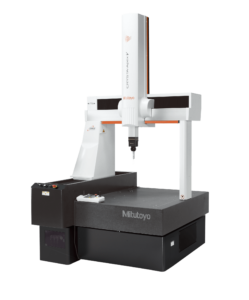
CRYSTA-Apex V500/700/900
quick view
CRYSTA-Apex EX 1200R
quick view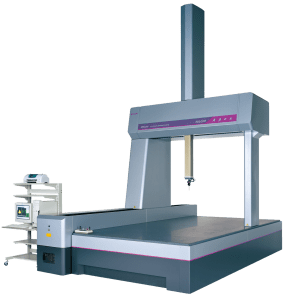
FALCIO-Apex 2000G/3000G/4000G/4500G
quick view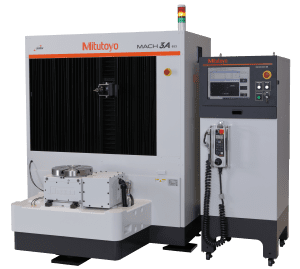
MACH-3A
quick view
MACH-Ko-Ga-Me
quick view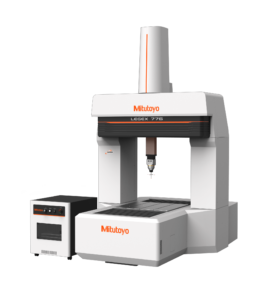
Legex 500/700/900/1200
quick view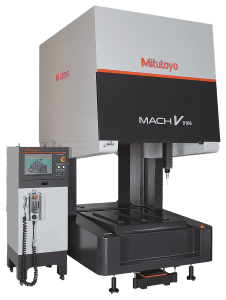
MACH-V
quick view
SJ-310 – Portable Surface Roughness Tester
quick view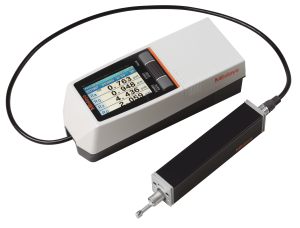
SJ-210 – Portable Surface Roughness Tester
quick view
MiSTAR 555
quick view
SJ-410 – Portable Surface Roughness Tester
quick view
SV-3000 CNC – Extreme Type
quick view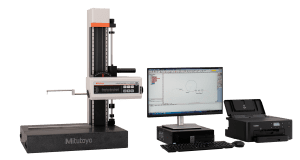
Contracer CV-2100 – Contour
quick view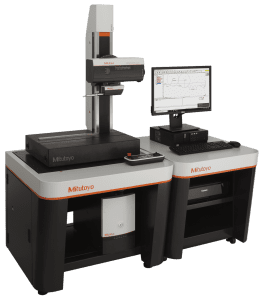
FTA-S3000
quick view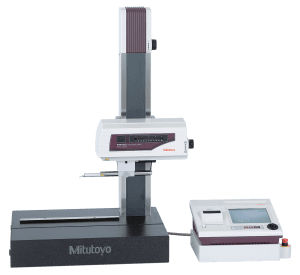
SV 2100 – Dedicated Processor – Column Type
quick view
FTA-C3000
quick view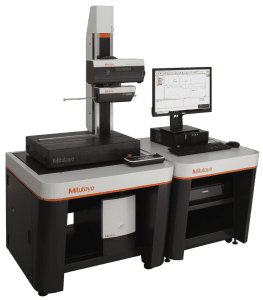
FTA-C4000
quick view
RA-2200 CNC – Extreme Type
quick view
RA-H5200 – Roundness / Cylindricity Capable
quick view
Roundtracer Flash
quick view
FTA-D4000 – Dual Detector – Dual-sided Contour Stylus Type
quick view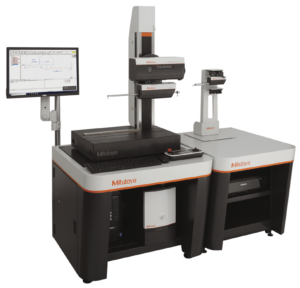
FTA-D3000 – Dual Detector – One Sided Contour Stylus Type
quick view
CS-3300 – Singular Detector Type
quick view
Roundtracer Extreme
quick view
Quick Vision ACCEL
quick view
Quick Vision Active
quick view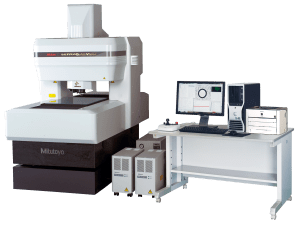
Quick Vision Ultra
quick view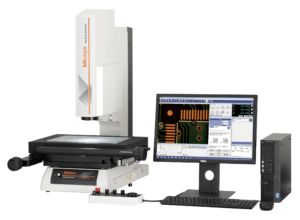
Quick Scope – Digital Microscopes
quick view
PH-A14 with M2 2D
quick view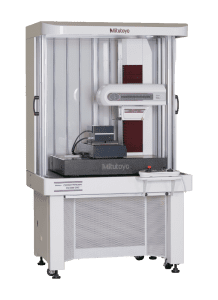
Formtracer Extreme CS-5000CNC / CS-H5000CNC
quick view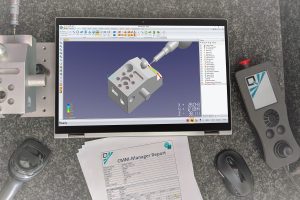
Native CAD Import
quick view
CMM-Manager
quick view
Offline Seat
quick view
PolyWorks Reviewer
quick view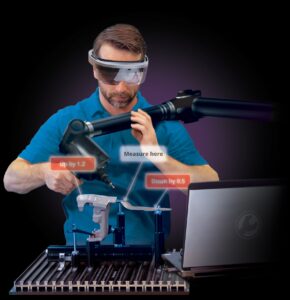
PolyWorks AR
quick view
PolyWorks Talisman
quick view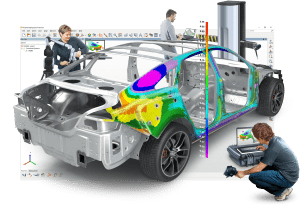
PolyWorks Inspector
quick view
PolyWorks ReportLoop
quick view
SNAP 350
quick view
SprintMVP 1550-1552
quick view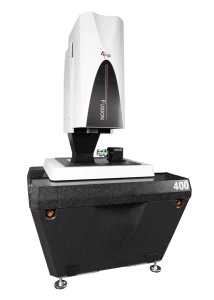
Fusion 400
quick view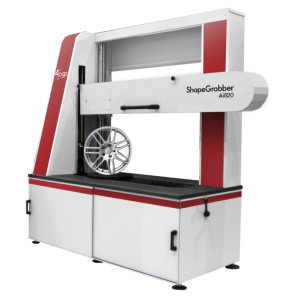
ShapeGrabber Ai820
quick view
ShapeGrabber Ai620
quick view
Offline Programming for Vision
quick view
ShapeGrabber Ai320 3D Scanner
quick view
SmartScope SP 463
quick view
SmartScope SP 663
quick view
SmartScope SP 332
quick view
Surftest SJ-500 / 500P
quick view
STRATO Apex 500/700/900/1600
quick view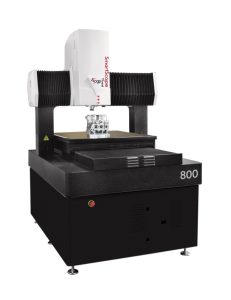
SmartScope Quest 800
quick view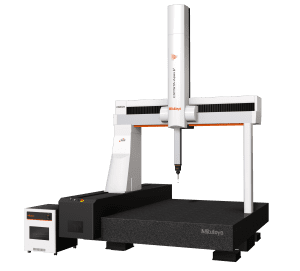
CRYSTA-Apex V1200/1600/2000
quick view
SmartScope Quest 650
quick view
SmartScope Quest 450
quick view
Flash 200 | Compact Benchtop System
quick view
SmartScope Quest 250
quick view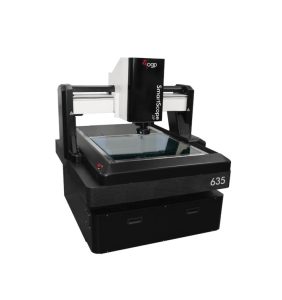
SmartScope ZIP 635
quick view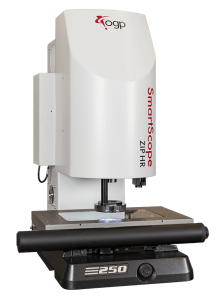
SmartScope ZIP HR 250
quick view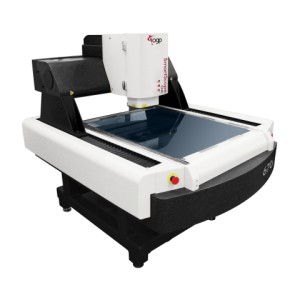
Smart Scope Flash 670
quick view
Benchtop Multisensor Measurement System
quick view
SmartScope Flash 1500 | 1550 | 1552
quick view
SmartScope Flash 500
quick view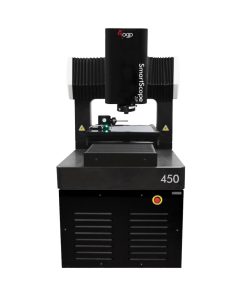
SmartScope ZIP 450
quick view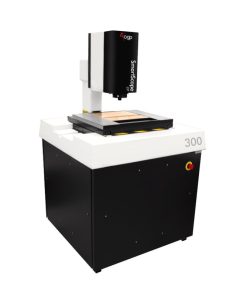
SmartScope ZIP 300
quick view
SmartScope Flash 635
quick view